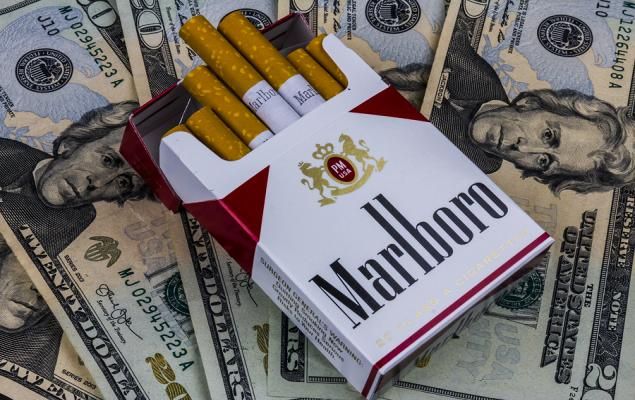CryptoCurrencyNews
Multicoin Capital, a leading U.S. investment firm focused on cryptocurrency, has announced a pledge of up to $1 million to support Senate candidates with favorable views on the crypto industry. The firm plans to back four Republican candidates—Sam Brown in Nevada, David McCormick in Pennsylvania, Bernie Moreno in Ohio, and Tim Sheehy in Montana—through donations to the conservative super political action committee Sentinel Action Fund.
Matching Crypto Donations
Multicoin’s support will depend on the outcome of Sentinel’s crypto donation drive. According to Sentinel’s website, Multicoin will match 100% of Solana (SOL) token donations sent to the PAC by July 14. Gemini is hosting the group’s crypto donations portal, accepting a variety of tokens, including SOL.
“We’re doing this because we realize that political engagement matters, and it starts with supporting the candidates who believe America needs to remain free for innovation,” said Multicoin Managing Partner Kyle Samani.
Bipartisan Support for Crypto-Friendly Candidates
Multicoin Capital, along with its leaders Kyle Samani and Tushar Jain, has previously supported pro-crypto candidates across party lines. Despite donating to Sentinel, a conservative group, Multicoin identified Sentinel as aligned with its crypto interests due to the specific candidates it is backing this cycle. All four Republican candidates supported by Sentinel have received “A” ratings from the Coinbase-led crypto advocacy group Stand With Crypto.
Candidate Ratings
While the opponents of these candidates are not uniformly critical of cryptocurrency, three out of four are rated as “neutral” or better by Stand With Crypto. However, Ohio Senator Sherrod Brown has received an “F” rating, partly due to his strong opposition to the crypto industry.
Strategic Political Investment in Crypto
Multicoin’s decision to support these races is driven by a desire to flip the Senate to Republican control. This shift could alter the balance of power in agency appointments and other key areas where crypto companies intersect with the federal government, such as the courts.
Tech Rollout: Dialect’s “Blink” Technology
The matching pledge also serves as a high-profile test of Dialect’s newly debuted “Blink” technology. This technology allows users of X to execute on-chain Solana transactions through their social media posts. Blink will enable Solana users to donate to Sentinel via X and prompt donors to fill out required Federal Election Commission documentation.
Featured Image: Freepik
]]>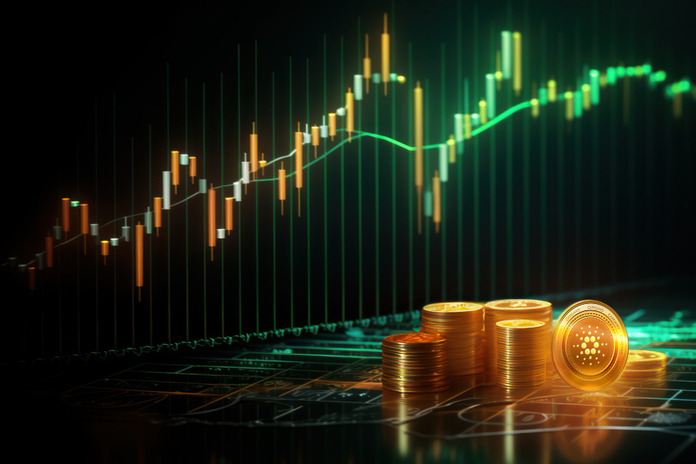 The value of cryptocurrency stolen in hacks worldwide more than doubled in the first six months of 2024 compared to the same period last year, driven by a few large-scale attacks and increasing crypto prices, according to blockchain researchers at TRM Labs. Surge in Crypto Theft Hackers stole over $1.38 billion worth of cryptocurrency by … Continue reading “Cryptocurrency Thefts Double to $1.4 Billion in First Half of 2024”]]>
The value of cryptocurrency stolen in hacks worldwide more than doubled in the first six months of 2024 compared to the same period last year, driven by a few large-scale attacks and increasing crypto prices, according to blockchain researchers at TRM Labs. Surge in Crypto Theft Hackers stole over $1.38 billion worth of cryptocurrency by … Continue reading “Cryptocurrency Thefts Double to $1.4 Billion in First Half of 2024”]]>
The value of cryptocurrency stolen in hacks worldwide more than doubled in the first six months of 2024 compared to the same period last year, driven by a few large-scale attacks and increasing crypto prices, according to blockchain researchers at TRM Labs.
Surge in Crypto Theft
Hackers stole over $1.38 billion worth of cryptocurrency by June 24, 2024, compared to $657 million in the first half of 2023, TRM Labs reported. The median theft size was one-and-a-half times larger than the previous year.
Ari Redbord, global head of policy at TRM Labs, noted, “While we have not seen any fundamental changes in the security of the cryptocurrency ecosystem, we have seen a significant increase in the value of various tokens—from Bitcoin to ETH (Ether) and Solana—compared to the same time last year.”
Increased Motivation for Cybercriminals
Rising cryptocurrency prices have motivated cybercriminals to target crypto services more aggressively. The increased value of tokens means that successful hacks result in larger hauls for attackers.
Crypto prices have rebounded from their late 2022 lows following the collapse of Sam Bankman-Fried’s crypto exchange, FTX. Bitcoin hit an all-time high of $73,803.25 in March 2024.
Major Thefts
One of the largest crypto thefts this year was the $308 million worth of Bitcoin stolen from Japanese crypto exchange DMM Bitcoin. The company described the incident as an “unauthorized leak.”
Cryptocurrency companies are frequent targets for cyberattacks, but thefts of this scale remain relatively rare. In 2022, stolen cryptocurrency volumes were around $900 million, with a significant portion attributed to the over $600 million stolen from a blockchain network linked to the online game Axie Infinity. U.S. authorities have connected North Korean hackers to that theft.
North Korean Cyber Activities
The United Nations has accused North Korea of using cyberattacks to fund its nuclear and missile programs. North Korea has denied these allegations of hacking and cyberattacks.
Implications for the Crypto Industry
The significant increase in cryptocurrency thefts highlights the ongoing challenges the industry faces in securing digital assets. As the value of cryptocurrencies continues to rise, so does the incentive for cybercriminals to exploit vulnerabilities.
Conclusion
The first half of 2024 has seen a dramatic rise in cryptocurrency thefts, with hackers stealing more than double the amount taken in the same period last year. As the crypto market continues to evolve, the industry must remain vigilant and invest in robust security measures to protect against increasingly sophisticated cyber threats.
Featured Image: Freepik
]]> Prices for major cryptocurrencies, as well as shares of Coinbase Global (NASDAQ:COIN) and MicroStrategy (NASDAQ:MSTR), slumped on Friday as the collapsed crypto exchange Mt. Gox began paying back creditors. Nobuaki Kobayashi, the trustee for the Mt. Gox bankruptcy estate, announced that the estate has “made repayments in Bitcoin and Bitcoin Cash to some of the … Continue reading “Bitcoin Falls as Mt. Gox Repayment Roils Crypto Market”]]>
Prices for major cryptocurrencies, as well as shares of Coinbase Global (NASDAQ:COIN) and MicroStrategy (NASDAQ:MSTR), slumped on Friday as the collapsed crypto exchange Mt. Gox began paying back creditors. Nobuaki Kobayashi, the trustee for the Mt. Gox bankruptcy estate, announced that the estate has “made repayments in Bitcoin and Bitcoin Cash to some of the … Continue reading “Bitcoin Falls as Mt. Gox Repayment Roils Crypto Market”]]>
Prices for major cryptocurrencies, as well as shares of Coinbase Global (NASDAQ:COIN) and MicroStrategy (NASDAQ:MSTR), slumped on Friday as the collapsed crypto exchange Mt. Gox began paying back creditors.
Nobuaki Kobayashi, the trustee for the Mt. Gox bankruptcy estate, announced that the estate has “made repayments in Bitcoin and Bitcoin Cash to some of the rehabilitation creditors through a part of the Designated Cryptocurrency Exchanges etc. in accordance with the Rehabilitation Plan.” He noted that other creditors would be “promptly” repaid once certain conditions were met, ensuring that payments could be made “safely and securely.”
Bitcoin and Ether Prices Drop
As of 10:45 a.m. ET Friday, Bitcoin (BTC) was trading around $55,700, down roughly 2.4%. Ether (ETH) was also down about 3.4%. The anticipation of the Mt. Gox news, which Kobayashi indicated last month would occur in July, had already begun to impact the crypto market. The latest announcement sent Bitcoin to its lowest level in five months.
Mt. Gox Hack and Its Aftermath
Mt. Gox was once the world’s largest crypto exchange, handling 70% of Bitcoin transactions at its peak. A hack in 2014, which resulted in the loss of an estimated 740,000 Bitcoin, led to the exchange’s collapse. The ongoing repayments to creditors have continued to create uncertainty in the market.
Impact on Coinbase and MicroStrategy
The repercussions of the Mt. Gox repayments have also been felt by Coinbase and MicroStrategy. Coinbase reported $935 million in revenue from customer crypto trading in the first quarter, double what it was in the fourth quarter. MicroStrategy disclosed in its first-quarter financial report that it owns 214,400 Bitcoin.
As of 10:45 a.m. ET Friday, Coinbase shares were down about 5% to $213.87, while MicroStrategy shares fell more than 6% to $1,220.11. Despite these declines, shares of Coinbase and MicroStrategy have surged about 23% and 93% year-to-date, respectively.
Market Reactions and Future Outlook
The anticipation and realization of the Mt. Gox repayments have created significant volatility in the crypto market. Investors are closely watching how the repayment process will unfold and its potential impact on Bitcoin and other cryptocurrencies. The continued distribution of the Mt. Gox estate could lead to further fluctuations in the market.
Conclusion
The Mt. Gox repayment process has significantly impacted the crypto market, causing a notable drop in Bitcoin and Ether prices. Shares of Coinbase and MicroStrategy also experienced declines amid the news. As the repayment process continues, market participants will be keenly observing the developments and their implications for the broader cryptocurrency landscape.
Featured Image: Freepik
]]>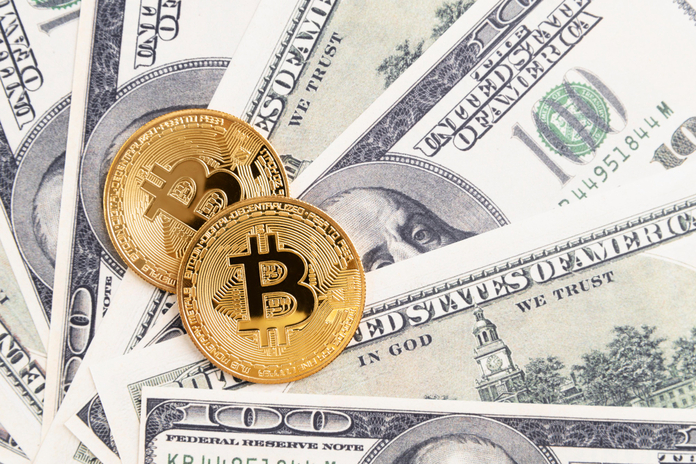 Concerns that the Mt. Gox bankruptcy redemptions will drive down the price of Bitcoin (BTC) are largely unfounded, according to Presto Labs’ Head of Research. However, the scenario could be more bearish for Bitcoin Cash. Market Impact Analysis As Bitcoin’s price continues to dip below $60,000, the market has already seen over $200 million in … Continue reading “Bitcoin Cash Faces Greater Selling Pressure Than Bitcoin from Mt. Gox Redemptions”]]>
Concerns that the Mt. Gox bankruptcy redemptions will drive down the price of Bitcoin (BTC) are largely unfounded, according to Presto Labs’ Head of Research. However, the scenario could be more bearish for Bitcoin Cash. Market Impact Analysis As Bitcoin’s price continues to dip below $60,000, the market has already seen over $200 million in … Continue reading “Bitcoin Cash Faces Greater Selling Pressure Than Bitcoin from Mt. Gox Redemptions”]]>
Concerns that the Mt. Gox bankruptcy redemptions will drive down the price of Bitcoin (BTC) are largely unfounded, according to Presto Labs’ Head of Research. However, the scenario could be more bearish for Bitcoin Cash.
Market Impact Analysis
As Bitcoin’s price continues to dip below $60,000, the market has already seen over $200 million in liquidations as the trading day began in Asia on Thursday, CoinDesk reported. The former exchange, Mt. Gox, is set to return approximately $9.5 billion in BTC to its customers. Additionally, it will also distribute 143,000 BCH, valued around $73 million. With Bitcoin Cash’s daily trading volume at $308.8 million, this redemption constitutes roughly 24% of its daily trading volume, according to CoinGecko data.
Peter Chung of Presto Labs pointed out, “Our analysis shows that the selling pressure for BCH will be four times larger than for BTC: 24% of the daily trading value for BCH vs. 6% of the daily trading value for BTC.” Chung noted that BCH’s daily trading value is only 1/50th of BTC’s.
Selling Pressure on Bitcoin Cash
In an interview with CoinDesk, Chung explained that Bitcoin is expected to experience limited selling because those who wished to exit had already sold their claims on bankruptcy claim markets. “Weak-handed creditors had plenty of chances to exit over the last ten years on the back of aggressive bidding from the claim funds, so we can safely assume the current group of creditors consists of diamond-handed BTC bulls,” Chung said.
Chung suggests that creditors are likely to treat BCH as an “airdrop” and sell it immediately because Bitcoin Cash’s fork occurred three years after Mt. Gox’s bankruptcy. “Creditors are oblivious to BCH’s cause,” he continued.
Trading Strategies
Chung recommended a market-neutral trading strategy to handle this situation: “Long BTC perpetuals paired with short BCH perpetuals is the most efficient way to express this view, barring funding rate risk.” He added that those looking to secure a funding rate could explore other approaches, such as shorting term futures or borrowing BCH in the spot market.
Current Market Performance
According to CoinDesk Indices data, BCH is currently trading at $360, down 3.8%. The looming Mt. Gox redemptions and the potential selling pressure are key factors influencing its current performance.
Conclusion
While the Mt. Gox redemptions are not expected to significantly impact Bitcoin, Bitcoin Cash could face substantial selling pressure. This discrepancy is due to the higher relative impact of the redemptions on BCH’s trading volume compared to BTC. Traders are advised to consider market-neutral strategies to navigate this period of volatility.
Featured Image: Freepik
]]> Fears of impending selling pressure from the defunct Mt. Gox exchange and potential miner sales pushed Bitcoin (BTC) under $59,000 on Thursday, marking its lowest level since late April. The anticipation of asset distributions from Mt. Gox, set to begin in July 2024, has contributed to the market’s anxiety. Market Impact and Liquidations Mt. Gox, … Continue reading “Bitcoin Drops Below $59K Amid Fears of Mt. Gox Liquidations and Miner Sales”]]>
Fears of impending selling pressure from the defunct Mt. Gox exchange and potential miner sales pushed Bitcoin (BTC) under $59,000 on Thursday, marking its lowest level since late April. The anticipation of asset distributions from Mt. Gox, set to begin in July 2024, has contributed to the market’s anxiety. Market Impact and Liquidations Mt. Gox, … Continue reading “Bitcoin Drops Below $59K Amid Fears of Mt. Gox Liquidations and Miner Sales”]]>
Fears of impending selling pressure from the defunct Mt. Gox exchange and potential miner sales pushed Bitcoin (BTC) under $59,000 on Thursday, marking its lowest level since late April. The anticipation of asset distributions from Mt. Gox, set to begin in July 2024, has contributed to the market’s anxiety.
Market Impact and Liquidations
Mt. Gox, which experienced a major hack in 2014, will start distributing assets to its clients next year. These repayments, made in Bitcoin (BTC) and Bitcoin Cash (BCH), are expected to exert significant selling pressure on both markets. In the past 24 hours, Bitcoin has lost 3.3%, according to CoinGecko data, with the sell-off starting shortly after the Tokyo equity markets opened.
Major cryptocurrencies also saw declines amid Bitcoin’s weakness. Ethereum (ETH) dropped 4%, while Solana (SOL) and Dogecoin (DOGE) fell as much as 8%. The broad-based CoinDesk 20 (CD20), which tracks the largest tokens, is down 4.8% in the past 24 hours.
Futures Market and Liquidations
Futures trades betting on higher prices saw significant liquidations, with over $230 million lost in the past 24 hours, according to CoinGlass data. BTC and ETH-tracked futures each experienced over $60 million in long liquidations, while products tracking DOGE, SOL, XRP, and PEPE recorded at least $4 million in losses.
These liquidations are the highest for long traders since late June. Binance saw the most liquidations among crypto exchanges, totaling over $110 million. Liquidations occur when an exchange forcefully closes a trader’s leveraged position due to a partial or total loss of the initial margin. This happens when a trader cannot meet the margin requirements for a leveraged position, resulting in insufficient funds to keep the trade open.
Such data is useful for traders as it indicates leverage being effectively washed out from popular futures products, acting as a short-term signal of a decline in price volatility.
Market Outlook
Trading firm QCP Capital expressed a cautious outlook for the coming months. In a Thursday broadcast on Telegram, they stated, “We anticipate a subdued Q3 for BTC as the market remains uncertain around the supply from the Mt. Gox release.”
The looming distributions from Mt. Gox and ongoing miner sales are creating a cloud of uncertainty in the market. As Bitcoin and other major cryptocurrencies face this selling pressure, the market could see continued volatility and downward trends.
Featured Image: Freepik
]]>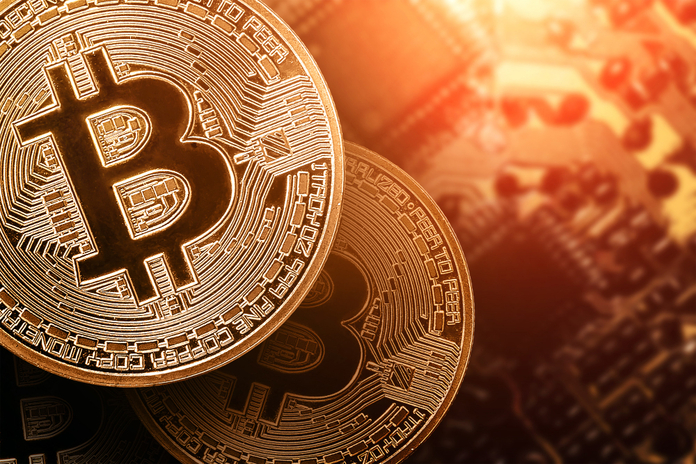 Bitcoin (BTC-USD) slid to a two-month low on Thursday, extending a month-long decline as uncertainty over U.S. presidential elections and reports of bitcoin supply from the defunct Tokyo-based crypto exchange, Mt. Gox, weighed on the market. Bitcoin fell more than 2% to $57,843, its lowest since May 2, and has lost more than 6% so … Continue reading “Bitcoin Falls to Two-Month Low Amid Election Uncertainty and Mt. Gox Sales”]]>
Bitcoin (BTC-USD) slid to a two-month low on Thursday, extending a month-long decline as uncertainty over U.S. presidential elections and reports of bitcoin supply from the defunct Tokyo-based crypto exchange, Mt. Gox, weighed on the market. Bitcoin fell more than 2% to $57,843, its lowest since May 2, and has lost more than 6% so … Continue reading “Bitcoin Falls to Two-Month Low Amid Election Uncertainty and Mt. Gox Sales”]]>
Bitcoin (BTC-USD) slid to a two-month low on Thursday, extending a month-long decline as uncertainty over U.S. presidential elections and reports of bitcoin supply from the defunct Tokyo-based crypto exchange, Mt. Gox, weighed on the market.
Bitcoin fell more than 2% to $57,843, its lowest since May 2, and has lost more than 6% so far this week. The world’s largest cryptocurrency has been under pressure in recent months, with its slide accelerating this week following the first debate between U.S. presidential candidates Joe Biden and Donald Trump, which raised the possibility of Biden being replaced as a candidate.
“If he [Biden] is to be replaced, and there’s a lot of conversation going on around that, that person may not be pro-crypto,” said Josh Gilbert, a market analyst at digital brokerage eToro.
Bitcoin had a strong start to the year after the launch of exchange-traded funds (ETFs) in the U.S., propelling it to a record $73,803.25 in mid-March as investors poured in. However, the rally has fizzled, with bitcoin losing more than 21% since then.
A politically charged backdrop, with ongoing elections in France and Britain, is resulting in some risk reduction, analysts said, alongside the changing odds in the U.S. election campaign.
Mt. Gox Influence on Bitcoin Prices
Analysts also pointed to reports that Mt. Gox, the world’s leading exchange for cryptocurrencies before it went defunct in 2014, is repaying its creditors, which could be dragging bitcoin lower if those creditors offload their tokens.
“There is an anticipation that some of those original buyers of bitcoin will start to sell on the market, which is a fairly big chunk,” said Tony Sycamore, a market analyst at IG. Sycamore added that while this is a period of consolidation for the cryptocurrency after strong gains earlier this year, it could retest the March highs and probably push up towards $80,000.
Ether (ETH-USD), another major cryptocurrency, was trading more than 1% lower at $3,213.0, and is down more than 22% from its mid-March highs.
Political Uncertainty and Market Volatility
The uncertainty surrounding the U.S. presidential elections is a significant factor affecting the cryptocurrency market. The debate between Biden and Trump has added to the volatility, with investors concerned about potential policy changes that could impact the crypto sector. The possibility of a less crypto-friendly candidate replacing Biden has intensified these fears.
Market Outlook
Despite the recent downturn, some analysts remain optimistic about Bitcoin’s long-term prospects. The market is currently in a consolidation phase, which could be a precursor to another upward move. The anticipation of potential token sales from Mt. Gox creditors is a factor that needs to be monitored closely, as it could create additional selling pressure in the short term.
However, the underlying fundamentals of Bitcoin and other cryptocurrencies remain strong, with continued interest from institutional investors and ongoing developments in blockchain technology.
Conclusion
Bitcoin’s recent drop to a two-month low reflects the current uncertainty in the market, driven by political factors and potential large-scale token sales. While the short-term outlook is cautious, the long-term prospects for Bitcoin and the broader cryptocurrency market remain positive, with potential for significant gains once the current uncertainties are resolved.
Featured Image: Freepik
]]> The United States, famously described by Walt Whitman as “large” and containing “multitudes,” is a land of diverse ideals and evolving mottos. Once unified under “e pluribus unum” (“from many, one”), the country’s guiding principle is now “In God We Trust.” Yet, the American Dream remains an enduring myth, promising success through hard work, talent, … Continue reading “Bitcoin and the American Dream: Shared Ambitions and Perspectives”]]>
The United States, famously described by Walt Whitman as “large” and containing “multitudes,” is a land of diverse ideals and evolving mottos. Once unified under “e pluribus unum” (“from many, one”), the country’s guiding principle is now “In God We Trust.” Yet, the American Dream remains an enduring myth, promising success through hard work, talent, … Continue reading “Bitcoin and the American Dream: Shared Ambitions and Perspectives”]]>
The United States, famously described by Walt Whitman as “large” and containing “multitudes,” is a land of diverse ideals and evolving mottos. Once unified under “e pluribus unum” (“from many, one”), the country’s guiding principle is now “In God We Trust.” Yet, the American Dream remains an enduring myth, promising success through hard work, talent, and determination.
The American Dream and Its Many Faces
The American Dream varies greatly depending on individual backgrounds. For a first-generation Greek-American, it represents the opportunities afforded by familial sacrifice. For others, the dream might be shaped by centuries-old roots in England, Ireland, or Italy, or by the legacy of ancestors who arrived on slave ships. This diversity in interpretation is not necessarily problematic, as big ideas often contain many guiding principles. Democracy, for instance, is universally accepted despite varied understandings.
Bitcoin’s Shared Ethos
Bitcoin, much like the American Dream, embodies a multitude of meanings and promises. It is often described with platitudes such as “Bitcoin Fixes This” and “Number Go Up.” At its core, Bitcoin aligns with the American Dream’s ethos of success through effort, evident in its mining process where increased work leads to greater rewards.
Bitcoin’s identity, like the American Dream, is multifaceted. Is it peer-to-peer electronic cash? Digital gold? A store of value? The answers depend on whom you ask. For a fully banked American, Bitcoin represents a financial product; for Roya Mahboob in Afghanistan, it’s a tool for empowering women and promoting education amidst gender inequality. In Argentina and Venezuela, Bitcoin is a hedge against hyperinflation.
Bitcoin, in its vastness, enables free, permissionless transactions, a principle that unites its diverse user base. Similarly, Americans are bonded by the shared pursuit of the American Dream, even if its manifestations differ widely.
Cynicism and Corporate Influence
Both America and Bitcoin face skepticism about being captured by corporate interests. George Carlin’s cynical take on the American Dream as an illusion and Hunter S. Thompson’s critique of American excess in “Fear and Loathing in Las Vegas” reflect concerns about consumerism and corporate influence.
Bitcoin, too, is seeing its rebellious roots challenged by mainstream adoption. The launch of Bitcoin ETFs by financial giants like BlackRock (NYSE:BLK) symbolizes a shift. Bitcoin, initially a response to the Great Financial Crisis, is now promoted by the same institutions it was meant to counter.
Despite this, the freedom to critique both America and Bitcoin remains a cherished right. Complaints and criticisms are integral to the growth and resilience of both.
Featured Image: Freepik
]]> Bitcoin price prediction remains a hot topic in the cryptocurrency world. Recently, Bitcoin’s value dipped below $61,000, causing concern among investors. Despite this downturn, some traders remain bullish, predicting that Bitcoin could reach $150,000 by the end of 2024. Current Bitcoin Price Trends Bitcoin (BTC) experienced a significant drop, falling below the $61,000 mark. This … Continue reading “Bitcoin Price Dips Below $61K Amid Bold $150K Prediction for 2024”]]>
Bitcoin price prediction remains a hot topic in the cryptocurrency world. Recently, Bitcoin’s value dipped below $61,000, causing concern among investors. Despite this downturn, some traders remain bullish, predicting that Bitcoin could reach $150,000 by the end of 2024. Current Bitcoin Price Trends Bitcoin (BTC) experienced a significant drop, falling below the $61,000 mark. This … Continue reading “Bitcoin Price Dips Below $61K Amid Bold $150K Prediction for 2024”]]>
Bitcoin price prediction remains a hot topic in the cryptocurrency world. Recently, Bitcoin’s value dipped below $61,000, causing concern among investors. Despite this downturn, some traders remain bullish, predicting that Bitcoin could reach $150,000 by the end of 2024.
Current Bitcoin Price Trends
Bitcoin (BTC) experienced a significant drop, falling below the $61,000 mark. This decline is part of a broader trend that has seen the cryptocurrency struggling to maintain its value amid market fluctuations. The recent dip has caused uncertainty among investors, who are closely watching the market for signs of a rebound.
According to CoinDesk, Bitcoin’s price fell sharply, reflecting the volatile nature of the cryptocurrency market. Despite these challenges, some analysts and traders continue to hold a positive outlook on Bitcoin’s future performance.
Bold Predictions Amid Volatility
One trader, in particular, has maintained a bold prediction that Bitcoin will reach $150,000 by the end of 2024. This optimistic forecast comes amid a broader trend of high volatility in the cryptocurrency market. The trader’s confidence is based on various factors, including market trends, technological advancements, and increasing adoption of Bitcoin.
Factors Influencing Bitcoin’s Price
Several factors are contributing to the current state of Bitcoin’s price:
- Market Sentiment: The overall sentiment in the cryptocurrency market plays a significant role in Bitcoin’s price movements. Negative news and regulatory concerns can lead to sharp declines, while positive developments can drive up prices.
- Adoption and Use Cases: As more businesses and institutions adopt Bitcoin, its utility and demand increase, which can positively impact its price. Major companies like Tesla (NASDAQ:TSLA) have already invested in Bitcoin, adding credibility to its use as a digital asset.
- Technological Developments: Advances in blockchain technology and improvements in Bitcoin’s network can enhance its appeal to investors. Innovations that increase transaction speed, security, and efficiency can boost confidence in Bitcoin’s long-term potential.
- Regulatory Environment: Government regulations and policies surrounding cryptocurrencies can significantly impact their prices. Favorable regulations can encourage investment, while restrictive measures can lead to market downturns.
Expert Opinions on Bitcoin’s Future
While some experts are remaining skeptical about Bitcoin’s ability to reach $150,000, others believe that the cryptocurrency’s potential for growth is substantial. Factors such as institutional investment, technological advancements, and increasing mainstream acceptance are seen as key drivers that could push Bitcoin to new heights.
Nancy Vanden Houten, an economist at Oxford Economics, noted that while Bitcoin’s price can be volatile, its underlying technology and increasing adoption present significant growth opportunities. “Bitcoin’s journey has been marked by ups and downs, but its resilience and potential for innovation make it a compelling investment,” she said.
Meanwhile, LPL Financial chief economist Jeffrey Roach emphasized the importance of market sentiment in driving Bitcoin’s price. “Investor sentiment plays a crucial role in the cryptocurrency market. Positive developments can lead to significant price increases, while negative news can cause sharp declines,” Roach explained.
Market Watch: Bitcoin’s Path Forward
As Bitcoin continues to navigate through market volatility, investors are keenly watching for signs of stability and growth. The $150,000 prediction by year-end remains ambitious, but not entirely out of reach given the right conditions. Technological advancements, increased adoption, and favorable regulatory developments could all contribute to a positive outcome for Bitcoin.
Conclusion
Bitcoin’s recent dip below $61,000 has sparked concern among investors, but the bold prediction of reaching $150,000 by the end of 2024 keeps the market optimistic. Various factors, including market sentiment, technological developments, and regulatory environment, will play crucial roles in determining Bitcoin’s future price movements. As the cryptocurrency market evolves, investors must stay informed and prepared for potential opportunities and challenges.
Featured Image: Freepik © starline
]]> Robinhood Markets Inc. (NASDAQ:HOOD) is considering offering cryptocurrency futures in both the United States and Europe. This potential expansion was first reported by Bloomberg, citing anonymous sources familiar with the matter, as the plans have not yet been made public. Expanding Crypto Offerings According to these sources, once Robinhood completes its $200 million acquisition of … Continue reading “Robinhood to Launch Crypto Futures in U.S. and Europe”]]>
Robinhood Markets Inc. (NASDAQ:HOOD) is considering offering cryptocurrency futures in both the United States and Europe. This potential expansion was first reported by Bloomberg, citing anonymous sources familiar with the matter, as the plans have not yet been made public. Expanding Crypto Offerings According to these sources, once Robinhood completes its $200 million acquisition of … Continue reading “Robinhood to Launch Crypto Futures in U.S. and Europe”]]>
Robinhood Markets Inc. (NASDAQ:HOOD) is considering offering cryptocurrency futures in both the United States and Europe. This potential expansion was first reported by Bloomberg, citing anonymous sources familiar with the matter, as the plans have not yet been made public.
Expanding Crypto Offerings
According to these sources, once Robinhood completes its $200 million acquisition of Bitstamp Ltd. next year, the trading platform plans to leverage Bitstamp’s licenses to offer perpetual futures for Bitcoin and other cryptocurrencies in Europe. Additionally, Robinhood is planning to introduce CME-based futures for Bitcoin and Ether in the United States. However, the plans are still under discussion and may change. A Robinhood spokesperson stated, “We have no imminent plans to launch these offerings.”
Robinhood has been actively expanding its cryptocurrency exposure. In November 2023, the company announced plans to start crypto trading in the European Union and brokerage operations in the U.K.
Regulatory and Market Developments
Currently, Robinhood holds a Zacks Rank #2. The complete list of today’s Zacks #1 Rank stocks can be found here. The approval of U.S. Bitcoin exchange-traded funds at the beginning of 2024 has significantly increased the demand for futures.
On January 10, 2024, the Securities and Exchange Commission approved rule changes allowing the launch of spot Bitcoin ETFs in the United States. This decision marked a significant shift in the regulatory landscape, which had previously been cautious about the largely unregulated crypto markets. The SEC’s approval of spot Bitcoin ETFs represented a turning point, encouraging more institutional investment in cryptocurrencies.
In February, Franklin Resources Inc. (NYSE:BEN) became the eighth firm to file for a spot Ethereum ETF. In November 2023, BlackRock Inc. (NYSE:BLK) filed for a spot Ethereum ETF named iShares Ethereum Trust, which led to a surge in Ethereum prices to their highest levels of the year. In June 2023, BlackRock became the first asset manager to file for a spot Bitcoin ETF, paving the way for other asset managers to follow suit.
Market Reactions and Future Prospects
Including Franklin Resources, all firms competing to introduce spot Ethereum ETFs had already rolled out spot Bitcoin products in January, indicating strong market interest and potential for growth in cryptocurrency investment products.
Featured Image: Wikipedia
]]>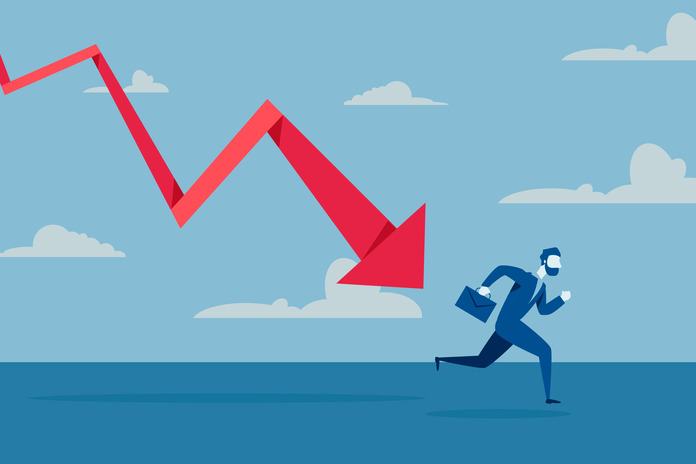 DeFi tokens have experienced a significant plunge, dropping between 10-20% amid weak crypto price action this week. This downturn in decentralized finance (DeFi) tokens highlights the volatility and challenges within the broader cryptocurrency market. DeFi Tokens Face Steep Declines The DeFi sector, known for its decentralized financial products and services, has seen some of its … Continue reading “DeFi Tokens Plunge Amid Weak Crypto Price Action”]]>
DeFi tokens have experienced a significant plunge, dropping between 10-20% amid weak crypto price action this week. This downturn in decentralized finance (DeFi) tokens highlights the volatility and challenges within the broader cryptocurrency market. DeFi Tokens Face Steep Declines The DeFi sector, known for its decentralized financial products and services, has seen some of its … Continue reading “DeFi Tokens Plunge Amid Weak Crypto Price Action”]]>
DeFi tokens have experienced a significant plunge, dropping between 10-20% amid weak crypto price action this week. This downturn in decentralized finance (DeFi) tokens highlights the volatility and challenges within the broader cryptocurrency market.
DeFi Tokens Face Steep Declines
The DeFi sector, known for its decentralized financial products and services, has seen some of its prominent tokens suffer substantial losses. Leading the decline is Pendle (PENDLE), which has experienced a sharp drop. The overall sentiment in the cryptocurrency market remains bearish, contributing to the steep declines in DeFi tokens.
New data from CoinDesk shows that DeFi tokens, including those of popular projects, are facing intense selling pressure. Pendle (PENDLE), for example, has seen its value decrease significantly, mirroring the broader downturn in the crypto market. This decline has raised concerns among investors about the future stability and growth potential of DeFi projects.
Market Sentiment and Investor Concerns
Market sentiment has played a crucial role in the recent price action. The bearish trend across the cryptocurrency market has not spared DeFi tokens, which are often more volatile due to their relatively smaller market capitalizations and higher risk profiles. Investors are becoming increasingly cautious, leading to a sell-off in these tokens.
LPL Financial chief economist Jeffrey Roach noted that the recent data is “sending a warning sign” about the potential softening of the market. This sentiment is echoed by other analysts who believe that the current market conditions could lead to further declines if negative sentiment persists.
Pendle Leads the Decline
Pendle (PENDLE) has been at the forefront of this decline. The token has faced significant selling pressure, resulting in a substantial drop in its value. The broader market’s weakness has exacerbated Pendle’s struggles, reflecting the interconnectedness of the cryptocurrency ecosystem.
The price action in Pendle (PENDLE) serves as a stark reminder of the volatility inherent in the cryptocurrency market. As investors react to broader market signals, tokens like Pendle are often subject to exaggerated moves, both upwards and downwards.
Broader Impact on DeFi Sector
The decline in DeFi tokens is not limited to Pendle. Other significant tokens within the DeFi ecosystem have also faced considerable losses. This includes well-known tokens such as Uniswap (UNI) and Aave (AAVE), which have both seen their prices drop amid the broader market weakness.
The drop in DeFi tokens has broader implications for the DeFi sector. As these tokens lose value, it can impact the overall liquidity and functionality of DeFi platforms. Lower token prices can lead to reduced collateral values, affecting lending and borrowing activities within the DeFi space.
Future Outlook for DeFi Tokens
The future outlook for DeFi tokens remains uncertain. While the current market conditions are challenging, some analysts believe that the long-term prospects for DeFi remain strong. The potential for decentralized financial services to disrupt traditional finance is significant, and many believe that DeFi will continue to grow despite the current setbacks.
Nancy Vanden Houten of Oxford Economics highlighted that while the current data is concerning, it is essential not to overreact to short-term volatility. “A persistent rise in initial claims would signal more weakness in the labor market and a larger rise in the unemployment rate than we currently expect,” she noted. This cautious approach is shared by other analysts who urge investors to consider the long-term potential of DeFi projects.
Conclusion
The recent plunge in DeFi tokens, led by Pendle (PENDLE), underscores the volatility and risks associated with the cryptocurrency market. While the short-term outlook is challenging, the long-term potential for DeFi remains promising. Investors should remain cautious and consider both the risks and opportunities within this dynamic sector.
Featured Image: Freepik © freepik
]]>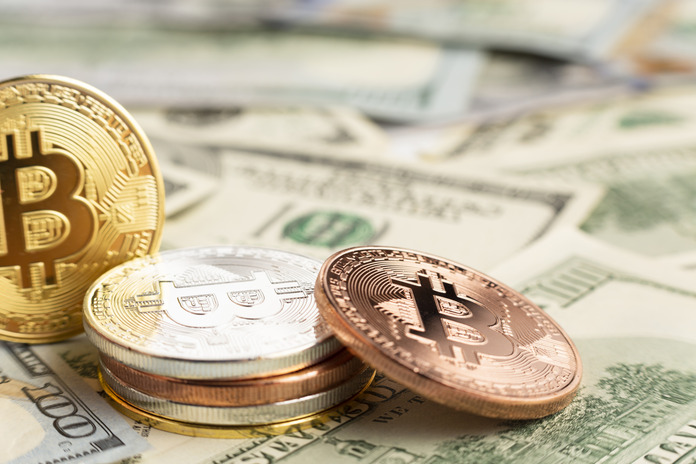 The crypto industry is experiencing a significant surge, with analysts predicting that it will soon outperform the early growth of the internet. This article explores the factors driving the crypto industry boom and its potential to reshape the financial landscape. The Rise of the Crypto Industry According to a recent report by Architect Partners, the … Continue reading “Crypto Industry Set to Boom, Outperforming the Internet”]]>
The crypto industry is experiencing a significant surge, with analysts predicting that it will soon outperform the early growth of the internet. This article explores the factors driving the crypto industry boom and its potential to reshape the financial landscape. The Rise of the Crypto Industry According to a recent report by Architect Partners, the … Continue reading “Crypto Industry Set to Boom, Outperforming the Internet”]]>
The crypto industry is experiencing a significant surge, with analysts predicting that it will soon outperform the early growth of the internet. This article explores the factors driving the crypto industry boom and its potential to reshape the financial landscape.
The Rise of the Crypto Industry
According to a recent report by Architect Partners, the crypto industry is on the verge of a major boom, driven by increased adoption and technological advancements. The report highlights that the growth trajectory of the crypto industry is now outpacing that of the early internet, suggesting a robust future for digital assets.
Factors Driving the Crypto Industry Boom
Several key factors are contributing to the rapid growth of the crypto industry:
- Institutional Adoption: Major financial institutions are increasingly investing in cryptocurrencies and blockchain technology. Companies like MicroStrategy (NASDAQ:MSTR) and Tesla (NASDAQ:TSLA) have made significant investments in Bitcoin, signaling strong institutional confidence in digital assets.
- Technological Advancements: Innovations in blockchain technology are enhancing the functionality and scalability of cryptocurrencies. Ethereum’s (ETH) transition to Ethereum 2.0, with its proof-of-stake mechanism, is expected to improve transaction speeds and reduce energy consumption, making it more appealing to both investors and developers.
- Regulatory Clarity: Governments around the world are beginning to establish clearer regulations for the crypto industry, providing a more secure environment for investors. The recent approval of Bitcoin ETFs in Canada and potential regulatory frameworks in the U.S. are positive steps towards mainstream acceptance.
- Increased Public Awareness: Public interest in cryptocurrencies has surged, driven by media coverage and the rise of crypto influencers. Platforms like Twitter and YouTube have become hubs for crypto-related discussions, further driving adoption and investment.
Comparison with the Internet Boom
The early days of the internet saw rapid growth and widespread adoption, transforming industries and creating new economic opportunities. Similarly, the crypto industry is now experiencing a comparable growth phase. Architect Partners’ report suggests that the current pace of growth in the crypto sector is faster than that of the internet in its early years, indicating a promising future.
Potential Challenges
Despite the optimistic outlook, the crypto industry faces several challenges that could impact its growth:
- Regulatory Hurdles: While regulatory clarity is improving, the crypto industry still faces uncertainty in many regions. Stricter regulations could potentially hinder growth and limit market access.
- Market Volatility: Cryptocurrencies are known for their price volatility, which can deter risk-averse investors. Major price swings can lead to market instability and affect investor confidence.
- Security Concerns: The rise of cryptocurrencies has also led to an increase in cyber threats. Ensuring the security of digital assets and preventing fraud are critical issues that need to be addressed.
The Future of the Crypto Industry
Despite these challenges, the future of the crypto industry looks bright. The combination of institutional adoption, technological advancements, and growing public interest is creating a strong foundation for sustained growth. Analysts predict that the crypto industry will continue to expand, potentially surpassing the growth rates of the early internet era.
As the industry matures, it is expected to integrate more seamlessly with traditional financial systems, offering new opportunities for innovation and investment. The ongoing development of decentralized finance (DeFi) platforms and the increasing adoption of blockchain technology across various sectors are likely to drive further growth.
Conclusion
The crypto industry boom is set to reshape the financial landscape, with its growth trajectory now outpacing that of the early internet. While challenges remain, the overall outlook is positive, driven by institutional adoption, technological advancements, and regulatory improvements. As the industry continues to evolve, it offers exciting opportunities for investors and innovators alike.
Featured Image: Freepik © freepik
]]> The Polifi sector has taken a significant hit as the political tussle between Trump and Biden intensifies. The sector, which once held promise, has seen a massive downturn, with Boden, one of its major players, dropping 95% from its peak. This article delves into the implications of this decline and explores the broader impact on … Continue reading “Trump-Biden Tussle Hits Polifi Sector, Boden Drops 95%”]]>
The Polifi sector has taken a significant hit as the political tussle between Trump and Biden intensifies. The sector, which once held promise, has seen a massive downturn, with Boden, one of its major players, dropping 95% from its peak. This article delves into the implications of this decline and explores the broader impact on … Continue reading “Trump-Biden Tussle Hits Polifi Sector, Boden Drops 95%”]]>
The Polifi sector has taken a significant hit as the political tussle between Trump and Biden intensifies. The sector, which once held promise, has seen a massive downturn, with Boden, one of its major players, dropping 95% from its peak. This article delves into the implications of this decline and explores the broader impact on the Polifi sector.
The Decline of the Polifi Sector
The Polifi sector, which encompasses the intersection of politics and finance, has been on a downward trajectory due to heightened political tensions. Boden, a key company in this sector, has experienced a drastic drop in value, plunging 95% from its peak. This decline underscores the vulnerability of the Polifi sector to political fluctuations.
Boden’s Plummet
Boden’s fall is a stark reminder of the sector’s volatility. The company’s decline can be attributed to several factors, including regulatory pressures, political uncertainties, and market skepticism. As political events continue to unfold, companies in the Polifi sector, like Boden, face increasing challenges in maintaining investor confidence.
Impact of Political Tensions
The ongoing political tussle between Trump and Biden has created an unstable environment for the Polifi sector. Policies and regulatory measures implemented by the Biden administration have introduced uncertainties, impacting investor sentiment. Conversely, Trump’s political maneuvers and rhetoric have added to the sector’s volatility, further shaking market stability.
This instability is further exacerbated by the unpredictability of policy changes, legal battles, and media scrutiny, which collectively undermine investor confidence and market performance. Companies in the Polifi sector must navigate these challenges, balancing regulatory compliance with strategic adaptability to maintain operational stability amid political turbulence.
Market Reactions and Investor Sentiment
Market reactions to the political dynamics have been swift and significant. Investors are increasingly cautious, leading to reduced investments in the Polifi sector. The sharp decline in Boden’s stock is a reflection of this sentiment. The sector’s future hinges on the resolution of political tensions and the establishment of a more stable regulatory environment.
Furthermore, the uncertainty has caused a ripple effect, impacting related sectors and heightening the overall market volatility. As a result, stakeholders are closely monitoring political developments and adjusting their strategies accordingly to mitigate potential risks and capitalize on emerging opportunities.
Broader Implications for the Polifi Sector
The Polifi sector’s downturn is not limited to Boden alone. Other companies within this space are also feeling the impact. The sector’s dependence on political stability makes it particularly susceptible to fluctuations in the political landscape. The ongoing tussle between Trump and Biden exemplifies the risks inherent in this sector.
Future Outlook for the Polifi Sector
Looking ahead, the future of the Polifi sector remains uncertain. The resolution of political conflicts and the establishment of clear regulatory frameworks are essential for the sector’s recovery. Companies within this space must navigate these challenges while seeking to restore investor confidence.
Additionally, fostering stronger relationships with policymakers and improving transparency in their operations can help mitigate risks. Adapting to changing political climates and being proactive in compliance efforts are crucial steps. By focusing on innovation and resilience, companies can better position themselves to thrive despite the ongoing political turmoil and market instability.
Strategic Moves and Adaptations
To mitigate the impact of political fluctuations, companies in the Polifi sector need to adopt strategic measures. Diversification, regulatory compliance, and transparent communication with investors are crucial steps. By addressing these areas, companies can better position themselves to weather political storms and stabilize their operations.
Conclusion
The decline of the Polifi sector, highlighted by Boden’s 95% drop, underscores the profound impact of political tensions on market stability. As the Trump-Biden tussle continues, the sector faces significant challenges in regaining investor confidence. The path to recovery lies in resolving political uncertainties and establishing a stable regulatory environment.
Featured Image: Freepik © freepik
]]>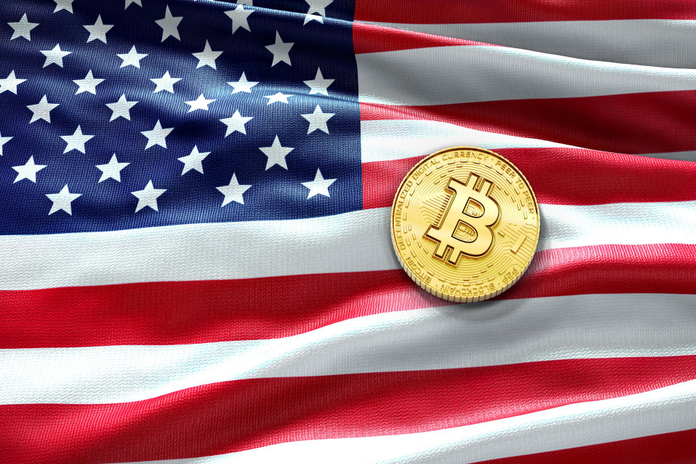 President Joe Biden’s lackluster debate performance last week has enhanced the chances of Donald Trump, a pro-crypto candidate, making a return to the White House. Despite this political shift, the market’s attention has been captivated by other factors. Altcoins Struggle Amid Low Volatility Bitcoin (BTC-USD) and Ether (ETH-USD) have experienced low volatility, creating a challenging … Continue reading “Crypto ‘Trump Trade’ Pauses as Market Focus Shifts”]]>
President Joe Biden’s lackluster debate performance last week has enhanced the chances of Donald Trump, a pro-crypto candidate, making a return to the White House. Despite this political shift, the market’s attention has been captivated by other factors. Altcoins Struggle Amid Low Volatility Bitcoin (BTC-USD) and Ether (ETH-USD) have experienced low volatility, creating a challenging … Continue reading “Crypto ‘Trump Trade’ Pauses as Market Focus Shifts”]]>
President Joe Biden’s lackluster debate performance last week has enhanced the chances of Donald Trump, a pro-crypto candidate, making a return to the White House. Despite this political shift, the market’s attention has been captivated by other factors.
Altcoins Struggle Amid Low Volatility
Bitcoin (BTC-USD) and Ether (ETH-USD) have experienced low volatility, creating a challenging environment for altcoins that typically thrive on market movements. According to David Zimmerman, a DeFi analyst at K33, the altcoin market has seen significant downturns, especially in sectors like GameFi tokens, while AI tokens have remained stagnant. This is despite a surge in new token launches, with an average of 250,000 new coins being introduced each month in the second quarter on Ethereum (ETH-USD) and major Ethereum-based layer-two chains.
“As majors continue to chop and pull back somewhat during this ‘low-vol summer’, the altcoin markets have been hit relatively hard,” Zimmerman noted in a Wednesday report. Memecoins have been a notable exception, growing to a $50 billion collective market capitalization. Tokens centered on the US political race and celebrities were the biggest drivers of this growth.
Market Metrics and Trends
A measure tracking the total crypto market capitalization excluding Bitcoin and Ether fell nearly 22% in the second quarter. “Altcoin beta is doing exactly what it is designed to do by outperforming – only it is to the downside in this case,” Zimmerman explained.
Featured Image: Freepik
]]>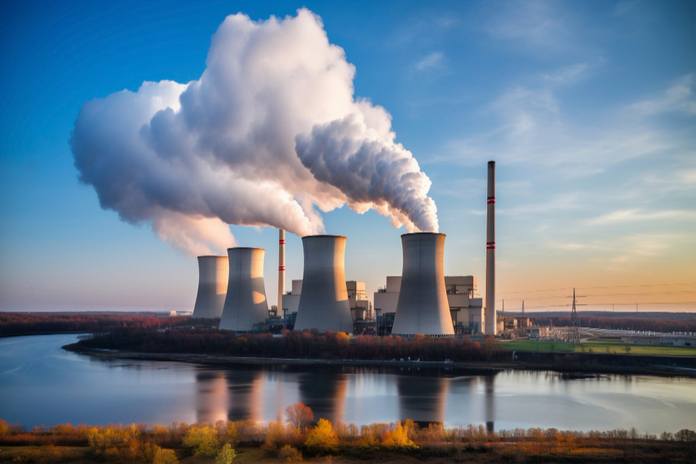 Kraken, the renowned cryptocurrency exchange, is exploring the use of nuclear energy as a power source for its data centers. This move comes amidst an anticipated surge in decentralized finance and growing demand for its services. Kraken Exploring Nuclear Power Solutions Kraken’s chief technical officer, Vishnu Patankar, revealed in an exclusive interview with CoinDesk that … Continue reading “Kraken Considers Nuclear Energy to Power Data Centers”]]>
Kraken, the renowned cryptocurrency exchange, is exploring the use of nuclear energy as a power source for its data centers. This move comes amidst an anticipated surge in decentralized finance and growing demand for its services. Kraken Exploring Nuclear Power Solutions Kraken’s chief technical officer, Vishnu Patankar, revealed in an exclusive interview with CoinDesk that … Continue reading “Kraken Considers Nuclear Energy to Power Data Centers”]]>
Kraken, the renowned cryptocurrency exchange, is exploring the use of nuclear energy as a power source for its data centers. This move comes amidst an anticipated surge in decentralized finance and growing demand for its services.
Kraken Exploring Nuclear Power Solutions
Kraken’s chief technical officer, Vishnu Patankar, revealed in an exclusive interview with CoinDesk that the company is looking into partnerships with energy providers capable of supplying small modular reactors. These reactors, which can be co-located with data centers, offer a solution that is not constrained by space or weather conditions.
“With institutions moving into the crypto asset class and activity moving on-chain, the need for reliable fiat onramps continues to grow,” Patankar explained. “Bolstering our energy resiliency means we strengthen a direct avenue into the crypto ecosystem, supporting its continued growth.”
Addressing Energy Demands
The surge in demand from artificial intelligence and high-performance computing firms has highlighted the need for stable power supplies. Kraken is investigating nuclear power options in North America and Europe to secure its energy needs in response to this growing demand.
“Crypto’s round-the-clock and global nature means Kraken needs a constant supply of energy, particularly as we facilitate a larger proportion of global trading volumes,” Patankar stated. The 24/7 operation of the cryptocurrency market necessitates a reliable and scalable energy solution.
Industry Trends and Future Outlook
The exploration of nuclear energy is part of a broader trend among tech companies seeking reliable power sources for data centers. The Wall Street Journal recently reported that firms, including Amazon Web Services, are negotiating contracts with nuclear plants to meet their energy needs. This trend reflects the increasing power demands of AI and other tech industries.
Core Scientific (NASDAQ:CORZ), for instance, recently signed a deal with AI firm CoreWeave to supply infrastructure. Patankar emphasized that a nuclear backup would enable Kraken to continue operations during major local energy disruptions, adding redundancy and enhancing energy resiliency.
Anticipated DeFi Boom
Kraken is preparing for a significant increase in energy needs due to the expected boom in DeFi. The firm anticipates that its energy requirements could become exponentially higher as the crypto market expands.
While a final decision has not been made, Patankar confirmed that nuclear power is a strong contender. Alternatives like wind and solar energy present challenges due to their dependency on weather conditions and energy storage limitations.
Environmental Considerations
The cryptocurrency industry has faced criticism for its high energy consumption, particularly with proof-of-stake blockchains like Bitcoin. Although nuclear energy also has a negative perception for different reasons, it could be a more environmentally friendly solution. Any excess energy generated by reactors could be used to power cooling systems for data centers.
Featured Image: Freepik
]]> Cryptocurrency exchange Bitget has announced a new social project in Vietnam aimed at educating the public on secure cryptocurrency usage and fraud prevention. The initiative will use engaging posters and banners displayed in public areas like bus stops, subways, and street billboards to provide tips on detecting and avoiding crypto scams. Raising Awareness About Crypto … Continue reading “Bitget Launches Campaign in Vietnam to Combat Crypto Scams”]]>
Cryptocurrency exchange Bitget has announced a new social project in Vietnam aimed at educating the public on secure cryptocurrency usage and fraud prevention. The initiative will use engaging posters and banners displayed in public areas like bus stops, subways, and street billboards to provide tips on detecting and avoiding crypto scams. Raising Awareness About Crypto … Continue reading “Bitget Launches Campaign in Vietnam to Combat Crypto Scams”]]>
Cryptocurrency exchange Bitget has announced a new social project in Vietnam aimed at educating the public on secure cryptocurrency usage and fraud prevention. The initiative will use engaging posters and banners displayed in public areas like bus stops, subways, and street billboards to provide tips on detecting and avoiding crypto scams.
Raising Awareness About Crypto Scams
According to a report by payment platform Triple-A, approximately 21.2% of the Vietnamese population owns cryptocurrencies, ranking second globally after the UAE at 34.4%. However, awareness about the risks associated with digital assets remains low, leading to a surge in financial losses due to fraud, particularly among vulnerable groups. In 2023 alone, cryptocurrency-related investment frauds resulted in about $3.94 billion in losses, marking a significant 53% increase from the previous year.
Targeting Vulnerable Populations
Data indicates that most victims of investment scams are over 30 years old, with a notable number of complaints coming from individuals over 60. This demographic is particularly vulnerable due to limited access to timely and clear information. As the third most populous country in Southeast Asia, Vietnam faces similar challenges to other countries in the region regarding digital asset extortion.
Regional Trends and Impact
A 2023 report by the UN Human Rights Office highlights that Southeast Asia is plagued with crypto-related romance-investment scams, fraud, and illegal gambling. The COVID-19 pandemic and associated response measures had a drastic impact on illicit activities across the region, with many victims suffering multiple layers of exploitation.
Effective Social Advertising
Gracy Chen, CEO of Bitget, emphasized the importance of social advertising in addressing these issues: “Along with the advancement of technologies, the cryptocurrency market has faced several urgent issues that have tested many aspects of social, economic, and cultural life. One of the key tools for engaging with the public and raising awareness, including among vulnerable groups, is social advertising. This format has shown high effectiveness worldwide, for instance, during the COVID-19 pandemic, where banners became a central element in informing citizens about the importance of precautionary measures.”
Bitget’s educational campaign in Vietnam aims to bridge the knowledge gap and reduce financial losses due to crypto scams by providing the public with crucial information in an accessible format.
Bitget’s Comprehensive Approach
Bitget’s initiative is part of a broader effort to promote safe cryptocurrency practices and protect users from fraud. The campaign will focus on providing practical advice and raising awareness through strategic placements of educational materials. This approach not only aims to inform but also to empower individuals to make safer investment decisions.
The Role of Public Spaces in Education
By leveraging high-traffic public spaces for their educational campaign, Bitget intends to reach a broad audience, including those who may not be actively seeking information about cryptocurrency safety. This method ensures that critical information is disseminated widely and effectively.
Global and Local Context
The increasing popularity of cryptocurrencies in Vietnam, coupled with a lack of adequate awareness about associated risks, underscores the importance of Bitget’s campaign. The initiative aligns with global efforts to enhance digital literacy and protect individuals from financial fraud, particularly in regions with high adoption rates and significant vulnerabilities.
Featured Image: Freepik
]]> Bitcoin miner CleanSpark (NASDAQ:CLSK) announced a major acquisition, merging with Griid Infrastructure in a $155 million deal. CleanSpark will acquire all common shares of Griid Infrastructure, significantly enhancing its operational capacity by gaining access to 20 megawatts of Griid’s available power. The acquisition is projected to increase CleanSpark’s power capacity by over 400 MW within … Continue reading “CleanSpark Acquires Griid Infrastructure in $155 Million Deal”]]>
Bitcoin miner CleanSpark (NASDAQ:CLSK) announced a major acquisition, merging with Griid Infrastructure in a $155 million deal. CleanSpark will acquire all common shares of Griid Infrastructure, significantly enhancing its operational capacity by gaining access to 20 megawatts of Griid’s available power. The acquisition is projected to increase CleanSpark’s power capacity by over 400 MW within … Continue reading “CleanSpark Acquires Griid Infrastructure in $155 Million Deal”]]>
Bitcoin miner CleanSpark (NASDAQ:CLSK) announced a major acquisition, merging with Griid Infrastructure in a $155 million deal. CleanSpark will acquire all common shares of Griid Infrastructure, significantly enhancing its operational capacity by gaining access to 20 megawatts of Griid’s available power. The acquisition is projected to increase CleanSpark’s power capacity by over 400 MW within the next two years.
Strategic Expansion in Bitcoin Mining
CleanSpark CEO Zach Bradford emphasized the strategic advantages of the acquisition, stating, “Griid’s energy infrastructure in Tennessee complements CleanSpark’s existing operations in Georgia and Mississippi. This acquisition provides us with a clear and steady path over the next three years.” The deal is expected to bolster CleanSpark’s footprint in the Bitcoin mining industry.
In Georgia, CleanSpark has developed over 400 MW of power capacity supported by long-term power contracts. Additionally, the company operates power infrastructure in Mississippi and co-locates mining machines in New York. CleanSpark is also expanding with new mining facilities in Wyoming, aiming to increase its overall mining capacity and operational efficiency.
Market Reactions and Future Prospects
Following the announcement, Griid Infrastructure’s stock price fell sharply by 49% to $1.20 per share. Despite this decline, Griid’s stock has rallied 55% over the past month, indicating investor optimism about the company’s future. Meanwhile, CleanSpark’s stock experienced a modest increase of 0.44%, trading at $16.15 per share.
The merger is expected to bring significant benefits to CleanSpark, including increased power capacity and enhanced operational efficiency. The acquisition aligns with CleanSpark’s strategy to expand its mining capabilities and strengthen its position in the Bitcoin mining sector.
CleanSpark’s Growing Presence in the Industry
CleanSpark has been steadily growing its presence in the Bitcoin mining industry through strategic acquisitions and infrastructure development. The company’s robust power infrastructure in Georgia, Mississippi, and New York, coupled with the upcoming facilities in Wyoming, positions it well for future growth. By acquiring Griid Infrastructure, CleanSpark aims to further solidify its market position and enhance its mining operations.
Long-Term Benefits and Strategic Vision
The acquisition of Griid Infrastructure is seen as a strategic move that will provide CleanSpark with a reliable and scalable power supply. This is crucial for maintaining and expanding its mining operations. The additional 20 MW of power from Griid’s infrastructure will immediately enhance CleanSpark’s operational capacity, while the potential to increase power capacity by over 400 MW in the next two years sets the stage for substantial growth.
Conclusion
CleanSpark’s acquisition of Griid Infrastructure marks a significant step in the company’s expansion strategy. By enhancing its power capacity and operational efficiency, CleanSpark is well-positioned to capitalize on the growing demand for Bitcoin mining. The strategic acquisition underscores CleanSpark’s commitment to scaling its operations and maintaining a competitive edge in the industry.
Featured Image: Freepik
]]>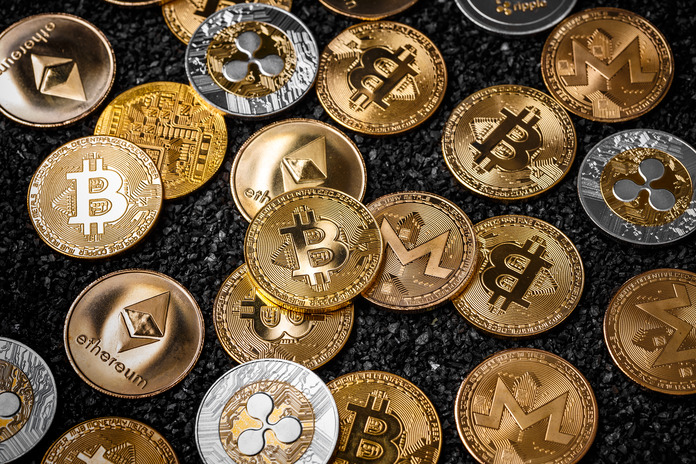 In the ever-shifting landscape of cryptocurrencies, stability is as elusive as silence in a bustling marketplace. Values soar and plummet with a volatility that would make the most daring roller coasters seem tame. However, it appears that the digital currency market is experiencing a renaissance, with signs of recovery and growth. Bitcoin: From Slump to … Continue reading “Crypto: The Market Is Looking Good Again”]]>
In the ever-shifting landscape of cryptocurrencies, stability is as elusive as silence in a bustling marketplace. Values soar and plummet with a volatility that would make the most daring roller coasters seem tame. However, it appears that the digital currency market is experiencing a renaissance, with signs of recovery and growth. Bitcoin: From Slump to … Continue reading “Crypto: The Market Is Looking Good Again”]]>
In the ever-shifting landscape of cryptocurrencies, stability is as elusive as silence in a bustling marketplace. Values soar and plummet with a volatility that would make the most daring roller coasters seem tame. However, it appears that the digital currency market is experiencing a renaissance, with signs of recovery and growth.
Bitcoin: From Slump to Surge
Bitcoin, the flagship of cryptocurrencies, has recently been under significant pressure. A massive liquidation of 3,940 bitcoins by the United States triggered panic among investors, eroding confidence in the market’s stability. Last Monday, Bitcoin fell to $60,330 before plunging further to $58,474, showing strong selling activity. However, buyers managed to keep the price above $60,000, an important psychological threshold.
On Tuesday, Bitcoin showed signs of recovery, increasing by 2.52% to reach $61,848, with an attempt to surpass $62,000. By Wednesday, sellers had regained control, bringing Bitcoin down to $60,854 despite an attempt to stabilize. At the time of writing, CoinGecko shows a Bitcoin price of $61,826, representing a 1.3% increase in the past 24 hours.
Despite these turbulences, technical indicators suggest a possible bullish reversal. The Relative Strength Index (RSI) near the oversold zone indicates that Bitcoin could soon rebound. Analysts estimate that the bulls will be particularly active between $56,500 and $60,000, as a drop below this level could lead to a descent to $55,000.
If Bitcoin manages to recover, it will first aim for $62,000. Surpassing this threshold could propel Bitcoin to $65,000, a key resistance level. Breaking above this level might trigger a rally to $70,000, according to Crypto Daily.
Ethereum and Other Major Cryptocurrencies
Ethereum, often seen as the wise advisor of the crypto world, is currently trading at $3,457, marking a 3% increase. Binance Coin (BNB), the treasurer of the crypto kingdom, follows the bullish trend with a 1.8% increase in the last 24 hours, trading around $580. Polkadot, known as the tireless messenger, also shows respectable gains with a 9% increase, reaching $6.35.
Uniswap (UNI) and Solana (SOL) are also riding the wave of optimism, showing respective increases of 2.4% and 8.9%. These upward movements illustrate a market in full fervor, ready to challenge new heights.
Memecoins: Adding Lightness and Surprise
In this vibrant context, memecoins add a touch of lightness and surprise. Dogecoin, the favorite cryptocurrency of internet users and Elon Musk, saw its price increase by 1.4% over 24 hours, settling at $0.1247. Shiba Inu, another popular memecoin, experienced a significant rise of 1.8%, reaching $0.00001754.
Pepecoin (PEPE) recorded an impressive increase of 11.6% over a month, settling at $0.0000123. However, its 24-hour performance disappointed altcoin traders. Despite this, the figures show that even the most whimsical players can achieve glory on the crypto stage.
Altcoins: Crucial for Market Diversification
Altcoins, as pillars of the crypto ecosystem, play a crucial role in the diversification of portfolios and market stabilization. While major cryptocurrencies like Bitcoin and Ethereum dominate headlines, altcoins offer unique opportunities for investors looking to diversify their holdings. The current market conditions suggest that many altcoins are poised for significant growth, contributing to the overall health and dynamism of the crypto market.
The Road Ahead
The recent data and trends indicate a cautiously optimistic outlook for the cryptocurrency market. As Bitcoin and other major cryptocurrencies show signs of recovery, and as altcoins and memecoins continue to capture the interest of investors, the market appears to be gearing up for a new phase of growth. However, investors should remain vigilant and consider the inherent volatility of the market.
Overall, the cryptocurrency market is demonstrating resilience and potential for growth. The coming months will be crucial in determining whether this positive trend continues and whether the market can sustain its current momentum. With continued interest and investment, the crypto market may well be on the verge of a significant upswing, offering new opportunities for investors and enthusiasts alike.
Featured Image: Freepik © grvstudio
]]>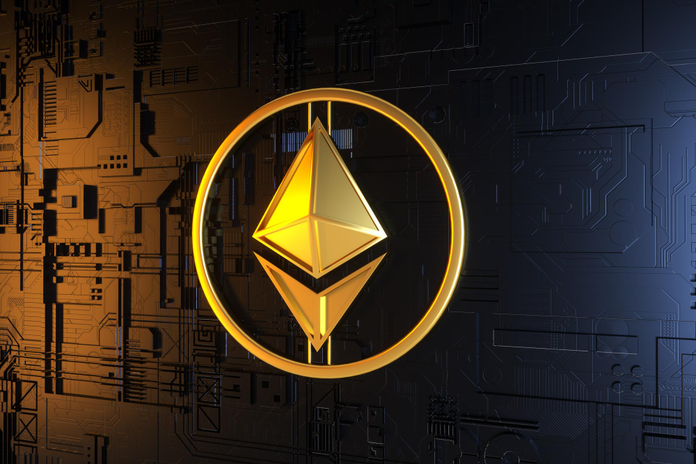 MegaLabs, the leading developer behind the innovative Ethereum scaling protocol known as “MegaETH,” announced a successful $20 million seed funding round led by Dragonfly Capital. This new investment aims to advance MegaETH, a real-time blockchain designed for instantaneous transaction processing, capable of streaming 100,000 transactions per second with millisecond-level responsiveness. MegaLabs Secures Funding to Revolutionize … Continue reading “MegaLabs Raises $20M to Develop Real-Time Blockchain Technology”]]>
MegaLabs, the leading developer behind the innovative Ethereum scaling protocol known as “MegaETH,” announced a successful $20 million seed funding round led by Dragonfly Capital. This new investment aims to advance MegaETH, a real-time blockchain designed for instantaneous transaction processing, capable of streaming 100,000 transactions per second with millisecond-level responsiveness. MegaLabs Secures Funding to Revolutionize … Continue reading “MegaLabs Raises $20M to Develop Real-Time Blockchain Technology”]]>
MegaLabs, the leading developer behind the innovative Ethereum scaling protocol known as “MegaETH,” announced a successful $20 million seed funding round led by Dragonfly Capital. This new investment aims to advance MegaETH, a real-time blockchain designed for instantaneous transaction processing, capable of streaming 100,000 transactions per second with millisecond-level responsiveness.
MegaLabs Secures Funding to Revolutionize Real-Time Blockchain Speed
The funding round saw participation from Figment Capital, Folius Ventures, Robot Ventures, Big Brain Holding, Tangent, and Credibly Neutral. Notable angel investors included Vitalik Buterin, co-founder of Ethereum, Joseph Lubin, CEO of Consensys, Sreeram Kannan, creator of EigenLayer, and Hasu of Flashbots.
Yilong Li, co-founder of MegaLabs, explained the company’s vision: “We define a real-time blockchain as one that processes transactions immediately upon arrival and produces outputs at a very high frequency.”
Real-Time Blockchain Innovation
MegaETH’s ability to scale is attributed to two primary factors: its “heterogeneous blockchain architecture,” which enhances performance by allowing network nodes with various hardware configurations to specialize in specific tasks, and a “hyper-optimized EVM execution environment” that maximizes throughput, latency, and resource efficiency. This execution environment operates as a blockchain operating system compatible with Ethereum’s programming standards.
The concept of MegaETH was partly inspired by Vitalik Buterin’s 2021 blog post “Endgame,” where he discussed scaling Ethereum. Buterin expressed his enthusiasm for MegaETH’s potential: “Creating hyper-scalable EVM implementations is a key prerequisite for truly scaling Ethereum. I am excited to see brilliant developers taking on this challenge.”
Featured Image: Freepik
]]> Pranksy’s Optimism in the Future of NFTs Well-regarded non-fungible token (NFT) collector Pranksy has voiced optimism approximately the destiny of NFTs, countering a developing narrative in their decline. Pranksy, an early NFT investor who has built a large following and collection, recently asked his X followers about the last time they purchased an NFT. The … Continue reading “Future of NFTs: Pranksy’s Optimism vs. Market Realities”]]>
Pranksy’s Optimism in the Future of NFTs Well-regarded non-fungible token (NFT) collector Pranksy has voiced optimism approximately the destiny of NFTs, countering a developing narrative in their decline. Pranksy, an early NFT investor who has built a large following and collection, recently asked his X followers about the last time they purchased an NFT. The … Continue reading “Future of NFTs: Pranksy’s Optimism vs. Market Realities”]]>
Pranksy’s Optimism in the Future of NFTs
Well-regarded non-fungible token (NFT) collector Pranksy has voiced optimism approximately the destiny of NFTs, countering a developing narrative in their decline. Pranksy, an early NFT investor who has built a large following and collection, recently asked his X followers about the last time they purchased an NFT. The post received nearly 118k views and more than 500 replies, prompting Pranksy to state that the NFT space is still living and breathing. “500 genuine replies, there is life in the old girl yet,” he wrote, implying that the future of NFTs is still active.
NFT Trading Data Paints a Different Picture
Pranksy’s optimism stands in contrast to data from CryptoSlam, which paints a more complex picture of the future of NFTs. In May, international NFT income totaled four million, marking the bottom month-to-month overall performance in view that October of the preceding year. It turned into additionally the primary month in 2024 to witness income beneath the It turned into additionally the primary month in 2024 to witness income beneath the $1 billion mark. billion mark.
Ethereum (NASDAQ:ETH), the leading blockchain for NFT sales with a historic volume of over $43 billion, experienced a decline in sales, recording $164 million in sales, the lowest since September. Notably, Ethereum’s number of unique buyers also dropped significantly, with only 56,914 unique buyers in May, the lowest count since June 2021.
The slump in NFT sales was not exclusive to Ethereum; even the Bitcoin (NASDAQ:BTC) network saw a decline. Bitcoin recorded zero million in month-to-month sales, the bottom discern considering the fact that October. Both the consumer and vendor anticipate the Bitcoin community hit their lowest factors this year. However, amidst the sales slump on major blockchains, Solana (NASDAQ:SOL) appeared to defy the trend in terms of activity.
Solana recorded $93 million in monthly sales, marking the first time it fell below the $100 million mark since November of the previous year. Solana additionally performed new information for month-to-month precise consumers and sellers, with 346,229 and 594,555 addresses respectively. Despite Solana’s active user base, the average NFT price on the network is experiencing a decline, with the average monthly sales value standing at $37.8, the lowest figure recorded this year.
Falling NFT Floor Prices Despite Bullish Crypto Trends
While the wider cryptocurrency marketplace has proven bullish tendencies in 2024, with numerous main tokens experiencing fee surges, NFT ground charges have now no longer accompanied suit. The top 5 major NFT collections have seen significant declines in their floor prices:
- Bored Ape Yacht Club (BAYC): Once the crown jewel of the NFT space, BAYC’s ground charge has plummeted from an all-time excessive of 153 ETH to round 8.ninety nine ETH.
- CryptoPunks: The iconic series has visible its ground charge drop from a hundred twenty five ETH at its top to twenty-five ETH.
- Pudgy Penguins: This collection of 8,888 penguin avatar NFTs on the Ethereum blockchain has also seen its floor price drop from 22.9 ETH to 8.99 ETH.
- Azuki: This anime-themed collection, once highly sought after, has seen its floor price dip from 31.8 ETH to 3.09 ETH.
- CloneX: Launched with the aid of using RTFKT, CloneX’s ground rate has reduced from 19.five ETH to 0.36 ETH.
These declines propose a full-size retracement from the heights of the NFT boom, at the same time as the wider crypto marketplace enjoys renewed investor confidence.
Companies Drop NFT Features
There has been a fashion of businesses discontinuing their involvement withinside the NFT space. In March, Starbucks (NASDAQ:SBUX), the renowned multinational coffee chain, terminated its NFT rewards program. In January, gaming retailer GameStop (NYSE) announced the closure of its NFT marketplace after scaling back its crypto services over the past two years. More recently, X, beneathneath the possession of Elon Musk, discontinued a function that allowed top class customers to apply NFT pictures as their profile pictures.
Despite the declining interest in the NFT space, there has been some positive news. Last month, renowned Portuguese footballer Cristiano Ronaldo revealed his collaboration with Binance for the launch of his fourth NFT collection. The collection, unveiled on May 29 on the Binance NFT Marketplace, pays homage to Ronaldo’s illustrious career, showcasing highlights from his football journey.
However, it’s worth noting that Ronaldo has been embroiled in legal issues related to his involvement in NFT collection sales with Binance. In November 2023, Ronaldo confronted a class-movement lawsuit in a United States district courtroom docket in Florida. The plaintiffs alleged that Ronaldo had actively participated in the offer and sale of unregistered securities in collaboration with Binance, arguing that he should have been aware of Binance’s involvement in such activities.
Conclusion
In summary, while Pranksy’s optimism about the future of NFTs is notable given his status and experience, the data from CryptoSlam tells a more nuanced story. The average decline in buying and selling volumes and falling ground costs of pinnacle collections spotlight the demanding situations going through the marketplace in 2024. Despite some positive developments, the future of NFTs continues to navigate a complex and volatile landscape.
Featured Image: Freepik © Freepik
]]> Risks of Celebrity Crypto Endorsements Pop icon Jason Derulo finds himself at the center of controversy after promoting a meme coin named JASON, which plummeted in value shortly after its release. Known for his musical performances, Derulo’s involvement in the volatile meme coin market has initiated a broader debate about the ethical concerns and potential … Continue reading “Jason Derulo’s Meme Coin Scandal and Celebrity Crypto Endorsements”]]>
Risks of Celebrity Crypto Endorsements Pop icon Jason Derulo finds himself at the center of controversy after promoting a meme coin named JASON, which plummeted in value shortly after its release. Known for his musical performances, Derulo’s involvement in the volatile meme coin market has initiated a broader debate about the ethical concerns and potential … Continue reading “Jason Derulo’s Meme Coin Scandal and Celebrity Crypto Endorsements”]]>
Risks of Celebrity Crypto Endorsements
Pop icon Jason Derulo finds himself at the center of controversy after promoting a meme coin named JASON, which plummeted in value shortly after its release. Known for his musical performances, Derulo’s involvement in the volatile meme coin market has initiated a broader debate about the ethical concerns and potential risks of celebrity crypto endorsements. This incident has led to significant monetary losses for investors and reputational damage for the celebrities involved.
The Fallout: Derulo and Sahil Arora
Recently, Jason Derulo took to X to announce the launch of the meme coin JASON to his 3.5 million followers. Unfortunately, the coin’s value dipped by more than 72% minutes after its release, causing widespread dismay among investors and fans. In reaction to the fallout, Derulo pointed palms at Sahil Arora, a parent formerly connected to cryptocurrency scandals. Attempting to rectify the situation, Derulo tweeted:
“Damn Sahil got me! That’s ok, that’s motivation to take this all the way! I just bought $20,000 worth. In this for my enthusiasts for the lengthy haul, going to do the whole thing in my energy to ship this sh*t to the moon.”
Derulo then addressed the issue in an apology video, expressing his commitment to making the coin’s recovery his “life’s goal.” Despite his proactive stance, skepticism surrounds Jason Derulo’s involvement with the JASON meme coin. Influential crypto figures, along with SlumDOGE Millionaire and on-chain detective ZachXBT, have solid doubt on Derulo’s claims.
Criticism from the Crypto Community
SlumDOGE Millionaire criticized Derulo, stating, “Bro made SlumDOGE Millionaire criticized Derulo, stating, “Bro made $1 million off his rug and put $20,000 again withinside the chart lol. million off his rug and put ,000 again withinside the chart lol. You’re not stupid or new to crypto, Jason; you know exactly what was happening. Don’t play dumb now.” The liquidity of the JASON meme coin is alarmingly low, at approximately 1,000, with around 3,190 holders. This situation mirrors other high-profile crypto scams where initial excitement leads to significant financial losses for ordinary investors.
The crypto community’s reaction has been overwhelmingly critical. ZachXBT, known for exposing crypto scams, responded to Derulo’s apology video, saying, “You are not sorry at all. You have promoted so many crypto scams over the years I have lost track.” He further added, “Projects will throw them high 5 fig – low 6 fig for Ongoing Celebrity Meme Coin Promotions.”
Repeated Offenses by Sahil Arora
This incident related to Derulo isn’t the primary of its kind. The accused developer, Sahil Arora, has launched several other celebrity-associated meme coins. Notably, Arora has been connected to latest meme coin scams regarding celebrities Caitlyn Jenner and Rich The Kid. Arora’s handle, “@Habibi_Comm,” turned into suspended following information of his involvement in pump-and-unload and rug-pull schemes thru movie star crypto tokens.
Both Jenner and Rich The Kid have publicly condemned Arora, with Jenner pronouncing plans to pursue prison movement towards him each criminally and civilly. The pattern of these scams highlights the need for greater awareness and caution among both celebrities and their followers when engaging with cryptocurrency investments.
Broader Implications and Future Outlook
The Jason Derulo meme coin controversy underscores the broader implications of celebrity crypto endorsements in the cryptocurrency market. As celebrities leverage their influence to promote financial products, the potential for both positive and negative impacts becomes evident. While endorsements can bring attention and legitimacy to certain projects, they also carry the risk of misleading fans and investors, especially in a highly volatile and unregulated market like cryptocurrency.
Moving forward, there is a growing call for more stringent regulations and guidelines governing celebrity crypto endorsements of financial products. These regulations would aim to protect investors from potential scams and ensure that endorsements are transparent and based on thorough due diligence. In conclusion, the ongoing debate around celebrity crypto endorsements highlights the need for a balanced approach that safeguards investor interests while allowing for the legitimate promotion of innovative financial products.
Featured Image: Freepik © grvstudio
]]> Japanese Institutional Crypto Investment Trends Japan’s largest investment bank, Nomura Holdings (TYO:8604), and its crypto subsidiary, Laser Digital, released findings from a recent survey on Monday. The survey targeted over 500 investment managers in Japan, revealing that 54% plan to allocate funds to crypto assets within the next three years. Motivations and Barriers for Japanese … Continue reading “Japanese Institutional Crypto Investment Rise: Nomura Survey”]]>
Japanese Institutional Crypto Investment Trends Japan’s largest investment bank, Nomura Holdings (TYO:8604), and its crypto subsidiary, Laser Digital, released findings from a recent survey on Monday. The survey targeted over 500 investment managers in Japan, revealing that 54% plan to allocate funds to crypto assets within the next three years. Motivations and Barriers for Japanese … Continue reading “Japanese Institutional Crypto Investment Rise: Nomura Survey”]]>
Japanese Institutional Crypto Investment Trends
Japan’s largest investment bank, Nomura Holdings (TYO:8604), and its crypto subsidiary, Laser Digital, released findings from a recent survey on Monday. The survey targeted over 500 investment managers in Japan, revealing that 54% plan to allocate funds to crypto assets within the next three years.
Motivations and Barriers for Japanese Institutional Crypto Investment
More than half of the respondents indicated a future interest in digital assets, motivated by recent developments such as the launch of crypto products like exchange-traded funds (ETFs), investment trusts, staking, and lending. These factors, along with the increasing mainstream adoption of cryptocurrencies, are seen as significant drivers in the growth and development of cryptocurrencies.
However, some institutions currently hesitant to invest in crypto assets cited counterparty risks, high volatility, regulatory requirements, and concerns about security as significant barriers to entry.
Positive Sentiment Towards Japanese Institutional Crypto Investment
Additionally, 25% of survey respondents have a positive impression of the asset class, and 62% view cryptos as an opportunity for investment diversification. The survey indicated that when investing in crypto assets, the preferred allocation is 2-5% of assets under management (AUM).
Interest in Web3 and Venture Capital Investments
Respondents also expressed interest in investing in Web3 projects, either directly or through venture capital (VC) funds. This interest reflects a broader trend towards integrating advanced blockchain technologies and decentralized applications into traditional investment strategies.
Japan’s Crypto Policy Developments
Japan is rapidly developing an economic reform bill with notable implications for Japanese institutional crypto investment. Early this year, the government published a legislative proposal allowing venture capital firms and other investment funds to hold digital assets directly. This inclusion of digital assets in the legal framework not only legitimizes their use in institutional investments but also positions Japan as a crypto-friendly jurisdiction globally.
Independent finance news outlet FinanceFeeds released a report in February, highlighting that Japan is a global leader in compliant crypto payments. In March, Japan’s $1.5 trillion pension fund was actively exploring the potential addition of Bitcoin to its investment portfolio.
Stablecoin Regulation in Japan
Japan has also heavily regulated stablecoins, noting that only banks, money transmission services, and trust firms can issue stablecoins. Additionally, all reserves underpinning the value of these tokens must be held in Japanese trusts and invested only in domestic bank accounts, ensuring the highest levels of security and compliance.
This stringent regulation aims to protect investors and maintain the stability of the financial system. Furthermore, these measures help to prevent fraudulent activities and enhance the overall trustworthiness of the cryptocurrency market in Japan, making it a safer environment for both institutional and individual investors.
Conclusion
The findings from Nomura Holdings’ survey indicate a growing interest and potential for significant Japanese institutional crypto investment. With progressive regulatory frameworks and an increasing number of investment managers showing interest in digital assets, Japan is poised to become a key player in the global crypto market.
As traditional financial institutions recognize the benefits of digital assets, the integration of these assets into investment portfolios is expected to accelerate. This shift not only enhances portfolio diversification but also opens up new avenues for growth and innovation in the financial sector. Japan’s proactive stance on crypto regulation plays a crucial role in fostering a secure and stable environment for digital asset investments.
By implementing stringent regulations on stablecoins and ensuring that reserves are held in domestic banks, Japan is setting a high standard for other nations to follow. This approach not only protects investors but also enhances the credibility and legitimacy of the crypto market. In summary, the increasing Japanese institutional crypto investment underscores Japan’s potential as a leading player in the global crypto industry.
As more institutions allocate funds to crypto assets, the Japanese market is likely to see substantial growth, innovation, and diversification in the coming years. This trend not only benefits the institutions themselves but also contributes to the overall advancement and maturity of the global crypto market.
Featured Image: Freepik © ojosujono96
]]> Bitfarms Ltd., a Bitcoin mining company, is adopting a “poison pill” shareholder rights plan in response to an unsolicited takeover offer from larger rival Riot Platforms Inc. A poison pill strategy is designed to deter corporate takeovers by making the acquisition too costly for the acquiring company. Under the terms of Bitfarms’ plan, if an … Continue reading “Bitfarms Implements ‘Poison Pill’ Plan Amid Hostile Riot Bid”]]>
Bitfarms Ltd., a Bitcoin mining company, is adopting a “poison pill” shareholder rights plan in response to an unsolicited takeover offer from larger rival Riot Platforms Inc. A poison pill strategy is designed to deter corporate takeovers by making the acquisition too costly for the acquiring company. Under the terms of Bitfarms’ plan, if an … Continue reading “Bitfarms Implements ‘Poison Pill’ Plan Amid Hostile Riot Bid”]]>
Bitfarms Ltd., a Bitcoin mining company, is adopting a “poison pill” shareholder rights plan in response to an unsolicited takeover offer from larger rival Riot Platforms Inc.
A poison pill strategy is designed to deter corporate takeovers by making the acquisition too costly for the acquiring company. Under the terms of Bitfarms’ plan, if an entity acquires an equity stake exceeding 15% by September 10, Bitfarms will issue new stock to existing shareholders, thereby diluting the stake of the entity pursuing the hostile takeover, as stated in a Monday announcement by Bitfarms.
Riot Platforms made an unsolicited offer of $950 million in May to acquire Bitfarms Ltd. following the latter’s rejection of Riot’s takeover bid the previous month. Bitfarms’ board deemed the proposal as significantly undervaluing the company and its growth prospects.
In April, Riot privately proposed $2.30 per share in cash and stock for Bitfarms, which represented a 20% premium over the company’s pre-offer share price.
According to Bitfarms, Riot currently holds 47,830,440 shares, constituting approximately 12% of the issued and outstanding stock. A spokesperson for Riot did not respond immediately to requests for comment.
On Monday, Bitfarms shares declined by 4.2% to $2.30, while Riot’s stock increased by 1.8% to $9.90. Year-to-date, both stocks have experienced declines of around 21% and 36%, respectively.
Featured Image: Freepik
]]> Bitdeer, a prominent Bitcoin (BTC) miner, has announced its acquisition of Desiweminer, a designer of chips for ASIC mining machines, in a significant all-stock transaction valued at $140 million. This strategic move aims to bolster Bitdeer’s capabilities in ASIC chip design and enhance its position in the competitive cryptocurrency mining industry. According to the announcement … Continue reading “Bitdeer Acquires Desiweminer for $140M in All-Stock Deal”]]>
Bitdeer, a prominent Bitcoin (BTC) miner, has announced its acquisition of Desiweminer, a designer of chips for ASIC mining machines, in a significant all-stock transaction valued at $140 million. This strategic move aims to bolster Bitdeer’s capabilities in ASIC chip design and enhance its position in the competitive cryptocurrency mining industry. According to the announcement … Continue reading “Bitdeer Acquires Desiweminer for $140M in All-Stock Deal”]]>
Bitdeer, a prominent Bitcoin (BTC) miner, has announced its acquisition of Desiweminer, a designer of chips for ASIC mining machines, in a significant all-stock transaction valued at $140 million. This strategic move aims to bolster Bitdeer’s capabilities in ASIC chip design and enhance its position in the competitive cryptocurrency mining industry.
According to the announcement made on Thursday, Bitdeer will acquire all outstanding shares of Desiweminer for a consideration of 20 million Class A ordinary BTDR shares. The transaction is subject to customary closing conditions, signaling the culmination of negotiations between the two entities.
As part of the acquisition, the Desiweminer team will integrate with Bitdeer’s ASIC design team based in Singapore. This collaboration is expected to lead to the development of innovative products that leverage the combined expertise and technologies of both companies. These new offerings are set for immediate release, highlighting the swift integration efforts underway.
Bitdeer’s acquisition of Desiweminer comes shortly after receiving a substantial investment of $150 million from stablecoin company Tether at the end of last month. This injection of funds underscores Bitdeer’s commitment to expanding its operations and investing in strategic partnerships to drive growth in the evolving cryptocurrency market landscape.
Following the announcement, BTDR shares experienced a modest uptick, rising 0.54% to $7.05 in pre-market trading. This response indicates initial market confidence in the potential synergies and value creation expected from the acquisition deal.
Overall, Bitdeer’s acquisition of Desiweminer represents a strategic maneuver to strengthen its position in the competitive ASIC chip design market and reinforce its presence in the rapidly evolving cryptocurrency mining sector.
Featured Image: Freepik
]]> Binance, the world’s largest cryptocurrency exchange, has resumed Mastercard payments for purchasing cryptocurrencies, marking a significant development in the crypto payment landscape. While Mastercard withdrawal services are not yet available, they are expected to be reinstated at a later date. This move comes after Mastercard suspended crypto-related services on Binance in August 2023. The decision … Continue reading “Binance Restores Mastercard Payments for Crypto”]]>
Binance, the world’s largest cryptocurrency exchange, has resumed Mastercard payments for purchasing cryptocurrencies, marking a significant development in the crypto payment landscape. While Mastercard withdrawal services are not yet available, they are expected to be reinstated at a later date. This move comes after Mastercard suspended crypto-related services on Binance in August 2023. The decision … Continue reading “Binance Restores Mastercard Payments for Crypto”]]>
Binance, the world’s largest cryptocurrency exchange, has resumed Mastercard payments for purchasing cryptocurrencies, marking a significant development in the crypto payment landscape. While Mastercard withdrawal services are not yet available, they are expected to be reinstated at a later date.
This move comes after Mastercard suspended crypto-related services on Binance in August 2023. The decision coincided with Binance facing legal challenges in the United States, including regulatory scrutiny from the U.S. Securities and Exchange Commission (SEC) and the U.S. Commodity Futures Trading Commission (CFTC).
After conducting a thorough review of Binance’s controls and processes, Mastercard decided to reinstate Binance-related purchases on its network. A spokesperson from Binance highlighted the extensive measures implemented by the exchange and expressed optimism about adding support for additional products, such as withdrawals, in the future.
Mastercard confirmed the restoration of service but emphasized that ongoing reviews would determine the continuation of Binance-related transactions on its network. This cautious approach underscores the importance of maintaining robust compliance measures in the cryptocurrency ecosystem.
Both Visa and Mastercard have shown enthusiasm for the cryptocurrency sector, venturing into Web3 and self-custody wallet solutions. The reinstatement of Mastercard payments on Binance reflects a broader trend of traditional financial institutions embracing the opportunities presented by cryptocurrencies and blockchain technology.
Featured Image: Freepik
]]> Kerrisdale Capital Management LLC, known for its short-selling strategies, has set its sights on Riot Blockchain Inc., criticizing its business model as flawed in the challenging landscape of Bitcoin mining. According to Kerrisdale, investing in Bitcoin directly is a more viable option for cryptocurrency enthusiasts than purchasing miner stocks. The report released by Kerrisdale founder … Continue reading “Short-Seller Kerrisdale Targets Riot Crypto Miner’s ‘Flawed’ Model”]]>
Kerrisdale Capital Management LLC, known for its short-selling strategies, has set its sights on Riot Blockchain Inc., criticizing its business model as flawed in the challenging landscape of Bitcoin mining. According to Kerrisdale, investing in Bitcoin directly is a more viable option for cryptocurrency enthusiasts than purchasing miner stocks. The report released by Kerrisdale founder … Continue reading “Short-Seller Kerrisdale Targets Riot Crypto Miner’s ‘Flawed’ Model”]]>
Kerrisdale Capital Management LLC, known for its short-selling strategies, has set its sights on Riot Blockchain Inc., criticizing its business model as flawed in the challenging landscape of Bitcoin mining. According to Kerrisdale, investing in Bitcoin directly is a more viable option for cryptocurrency enthusiasts than purchasing miner stocks.
The report released by Kerrisdale founder Sahm Adrangi highlighted Riot’s shareholder dilution due to the company’s stock-selling practices. Additionally, Adrangi’s letters to Texas government officials raised concerns about Riot’s energy usage practices and its impact on the state’s energy laws.
Shares of Riot, based in Castle Rock, Colorado, experienced a decline of up to 8.9% following the publication of Kerrisdale’s report. The company has yet to respond to requests for comment from Bloomberg News.
Adrangi emphasized that Bitcoin mining is a highly competitive commodity business with minimal barriers to entry, particularly as new mining projects emerge globally. He argued that the current valuations of Bitcoin miners do not justify investment, especially considering the availability of low-fee exchange-traded funds for investors seeking exposure to Bitcoin.
This isn’t the first time Kerrisdale has targeted companies with exposure to cryptocurrencies. In March, the firm recommended a pair trade involving shorting MicroStrategy Inc. while taking a long Bitcoin position, a strategy that has proven successful thus far.
However, there are potential risks associated with shorting Bitcoin miners, as demonstrated by Core Scientific Inc.’s recent surge in stock price following news of long-term contracts and acquisition offers. Despite the challenges highlighted by Kerrisdale, the dynamic nature of the cryptocurrency market leaves room for miners to adapt their business models and attract investors or strategic buyers.
Featured Image: Freepik
]]>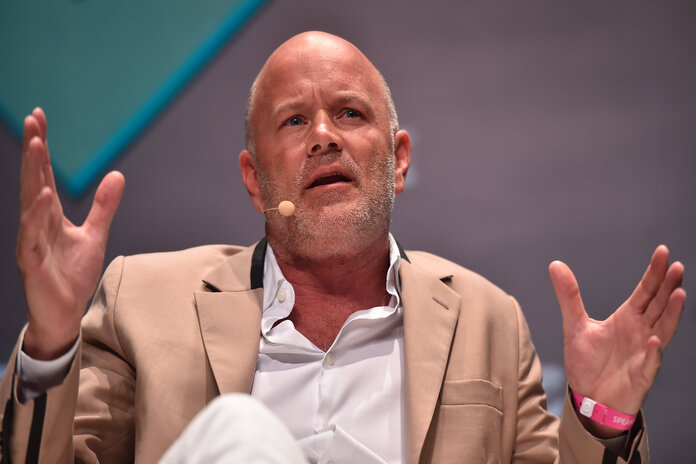 Digital assets firm Galaxy Digital has granted a multimillion-dollar loan to Yat Siu, the co-founder of Animoca Brands, using a unique collateral combination: a tokenized 1708 Stradivarius violin and its corresponding non-fungible token. Valued at over $9 million, the violin boasts a storied history, including ownership by Russian Empress Catherine the Great. This deal could … Continue reading “Stradivarius Violin Secures $9M NFT Loan from Galaxy Digital”]]>
Digital assets firm Galaxy Digital has granted a multimillion-dollar loan to Yat Siu, the co-founder of Animoca Brands, using a unique collateral combination: a tokenized 1708 Stradivarius violin and its corresponding non-fungible token. Valued at over $9 million, the violin boasts a storied history, including ownership by Russian Empress Catherine the Great. This deal could … Continue reading “Stradivarius Violin Secures $9M NFT Loan from Galaxy Digital”]]>
Digital assets firm Galaxy Digital has granted a multimillion-dollar loan to Yat Siu, the co-founder of Animoca Brands, using a unique collateral combination: a tokenized 1708 Stradivarius violin and its corresponding non-fungible token.
Valued at over $9 million, the violin boasts a storied history, including ownership by Russian Empress Catherine the Great. This deal could set a precedent for the tokenization of physical assets, potentially revolutionizing collateralization and opening new investment opportunities for high-value items.
Galaxy Digital’s decision to tokenize the Stradivarius violin, crafted by the esteemed Stradivari family, merges the art world with blockchain technology. The physical violin will be securely stored in Hong Kong, while its digital counterpart facilitates the loan process.
Tokenization involves converting a tangible asset into a digital token tradable on blockchain platforms, offering a novel approach to asset management. Several asset managers are optimistic about the future of tokenization.
A report by 21.co late last year projected that the tokenization market could scale to $3.5 trillion in a bear-case scenario, or up to $10 trillion in a bull case.
Featured Image: Wikipedia
]]> In response to the growing demand for scalable and cost-effective Bitcoin payments, the team behind the Bitcoin layer-2 protocol Ark has established a new company called Ark Labs. This innovative firm aims to develop a faster and more efficient payment system on the Bitcoin blockchain, offering a compelling alternative to the Lightning Network. Led by … Continue reading “Ark Protocol’s Team Forms Lightning Network Competitor”]]>
In response to the growing demand for scalable and cost-effective Bitcoin payments, the team behind the Bitcoin layer-2 protocol Ark has established a new company called Ark Labs. This innovative firm aims to develop a faster and more efficient payment system on the Bitcoin blockchain, offering a compelling alternative to the Lightning Network. Led by … Continue reading “Ark Protocol’s Team Forms Lightning Network Competitor”]]>
In response to the growing demand for scalable and cost-effective Bitcoin payments, the team behind the Bitcoin layer-2 protocol Ark has established a new company called Ark Labs. This innovative firm aims to develop a faster and more efficient payment system on the Bitcoin blockchain, offering a compelling alternative to the Lightning Network.
Led by creator Burak Keceli, Ark Labs seeks to address the limitations of existing solutions while building upon the foundation laid by Lightning Network. The primary focus of Ark Labs is to provide scalable and low-cost Bitcoin payments, catering to the needs of users worldwide.
The core objectives of Ark Labs include the development of an open implementation of the Ark Protocol and the creation of user-friendly services. The company plans to introduce its first service later this year, aiming to revolutionize the landscape of Bitcoin payments.
Unlike the Lightning Network, which faces challenges such as the “inbound liquidity” problem, Ark Protocol offers a novel approach to off-chain payments. By leveraging service providers who offer 24-hour liquidity services for a fee, Ark eliminates the need for users to commit funds upfront to establish liquidity.
Ark’s off-chain payments utilize a unique unspent transaction output (UTXO) model, employing virtual unspent transaction outputs (VTXOs) to facilitate seamless and secure transactions. This model enables unidirectional, one-time-only payments, enhancing the efficiency and usability of Bitcoin payments.
While Keceli has transitioned to other endeavors, the protocol and Ark Labs remain committed to advancing the goals of improving Bitcoin’s payment infrastructure. With its innovative approach and ambitious objectives, Ark Labs emerges as a formidable contender in the realm of Bitcoin payments, poised to reshape the future of digital transactions.
Featured Image: Freepik
]]>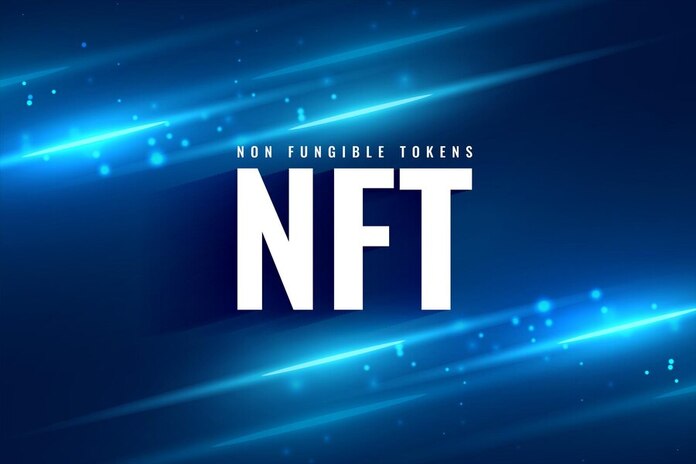 In May, global non-fungible token (NFT) sales witnessed a notable decline, totaling $604 million, marking the lowest monthly performance since October and the first month of the year with sales below $1 billion. Ethereum, renowned as the leading blockchain for NFT sales, experienced a dip in sales, recording $164 million in May, the lowest since … Continue reading “NFT Sales Hit Lowest Point Since October”]]>
In May, global non-fungible token (NFT) sales witnessed a notable decline, totaling $604 million, marking the lowest monthly performance since October and the first month of the year with sales below $1 billion. Ethereum, renowned as the leading blockchain for NFT sales, experienced a dip in sales, recording $164 million in May, the lowest since … Continue reading “NFT Sales Hit Lowest Point Since October”]]>
In May, global non-fungible token (NFT) sales witnessed a notable decline, totaling $604 million, marking the lowest monthly performance since October and the first month of the year with sales below $1 billion.
Ethereum, renowned as the leading blockchain for NFT sales, experienced a dip in sales, recording $164 million in May, the lowest since September. The network also saw a decrease in unique buyers, with only 56,914 recorded, the lowest count since June 2021.
Similarly, the Bitcoin network observed a downturn in NFT sales, with monthly sales totaling $160 million, the lowest since October. The network also reported a decline in both buyers and sellers, marking the lowest count for the year.
Contrary to the overall trend, Solana showcased resilience in NFT activity. Despite the sales slump in major blockchains, Solana recorded $93 million in monthly sales, the first time it fell below $100 million since last November. Solana set new records for monthly unique buyers and sellers, with 346,229 and 594,555 addresses, respectively.
However, despite the heightened activity, Solana witnessed a decline in the average NFT price, with an average monthly sales value of $37.8, the lowest this year. Despite the challenges faced by the NFT market in May, Solana’s performance highlights its growing prominence in the NFT space.
Featured Image: Freepik
]]> Coinbase’s recent $25 million donation to political action committees (PACs) has propelled the crypto industry’s campaign fund to approximately $161 million, making it one of the most significant players in U.S. campaign finance. This substantial cash injection positions the crypto industry as a formidable force in influencing the political landscape, with the potential to allocate … Continue reading “Coinbase Floods Crypto with Record Campaign Funds”]]>
Coinbase’s recent $25 million donation to political action committees (PACs) has propelled the crypto industry’s campaign fund to approximately $161 million, making it one of the most significant players in U.S. campaign finance. This substantial cash injection positions the crypto industry as a formidable force in influencing the political landscape, with the potential to allocate … Continue reading “Coinbase Floods Crypto with Record Campaign Funds”]]>
Coinbase’s recent $25 million donation to political action committees (PACs) has propelled the crypto industry’s campaign fund to approximately $161 million, making it one of the most significant players in U.S. campaign finance.
This substantial cash injection positions the crypto industry as a formidable force in influencing the political landscape, with the potential to allocate over $300,000 for each congressional seat up for grabs in the upcoming elections.
Coinbase joins Ripple and Andreessen Horowitz (a16z) in contributing to the Fairshake PAC and its affiliate PACs, which aim to support congressional candidates with pro-crypto stances. By targeting state primaries and backing candidates aligned with their mission, these committees wield considerable influence, often through independent ad campaigns.
The crypto industry’s involvement in politics underscores its recognition of the pivotal role of U.S. regulations in shaping global acceptance of digital assets. As lawmakers navigate the complexities of crypto legislation, the next congressional session could usher in regulations tailored to digital assets, potentially driving broader adoption and investor confidence.
The influx of funds from Coinbase and other industry giants highlights the growing influence of super PACs, enabling corporations to exert significant sway over elections. With a war chest rivaling that of major political parties, the crypto industry’s campaign finance efforts signify a strategic investment in shaping regulatory frameworks conducive to its growth.
However, transparency regarding Fairshake’s management and strategies remains limited, as key stakeholders refrain from disclosing operational details. Despite criticisms suggesting undue influence, proponents argue that such contributions are commonplace across various industries, aimed at supporting candidates aligned with their interests.
As the crypto industry emerges as a major player in campaign finance, its collective contributions could rival those of established political entities. By leveraging its financial prowess, the industry seeks to advance its agenda and foster an environment conducive to innovation and growth in the digital assets space.
Featured Image: Megapixl
]]> Russian commodities firms facing challenges in executing financial transactions with Chinese counterparts are turning to stablecoins as a new method for settling deals. At least two major metals producers have begun utilizing Tether Holdings Ltd.’s stablecoin and other cryptocurrencies to settle cross-border transactions with primarily Chinese clients and suppliers. These settlements, in some cases, are … Continue reading “Russian Firms Embrace Crypto for China Trade”]]>
Russian commodities firms facing challenges in executing financial transactions with Chinese counterparts are turning to stablecoins as a new method for settling deals. At least two major metals producers have begun utilizing Tether Holdings Ltd.’s stablecoin and other cryptocurrencies to settle cross-border transactions with primarily Chinese clients and suppliers. These settlements, in some cases, are … Continue reading “Russian Firms Embrace Crypto for China Trade”]]>
Russian commodities firms facing challenges in executing financial transactions with Chinese counterparts are turning to stablecoins as a new method for settling deals. At least two major metals producers have begun utilizing Tether Holdings Ltd.’s stablecoin and other cryptocurrencies to settle cross-border transactions with primarily Chinese clients and suppliers. These settlements, in some cases, are routed through Hong Kong.
The shift towards blockchain-based transactions highlights the enduring impact of international restrictions imposed in response to the 2022 invasion of Ukraine on the Russian economy. Even unsanctioned Russian companies dealing in commodities such as metals and timber have encountered difficulties in receiving payments for their goods and procuring equipment and raw materials. Challenges persist despite China’s stance of not joining international sanctions, as the US Treasury Department’s threats of secondary sanctions on lenders facilitating sanctions evasion have led to increased compliance measures.
Stablecoins offer a faster and more cost-effective alternative for transactions, with transfers taking just seconds and costing only a few cents. Tether’s USDT stablecoin, pegged to the US dollar, provides added convenience for exporters. The alternative of traditional banking transactions carries the risk of account freezing, with some companies experiencing the frustration of multiple frozen accounts in various countries.
The growing role of cryptocurrencies in settlements is not unique to Russia, as countries under sanctions like Venezuela have increasingly turned to Tether for transactions, often brokered through intermediaries in Dubai. This trend reflects a broader shift in the Russian central bank’s stance towards the cryptocurrency industry. While previously considering a blanket ban, Governor Elvira Nabiullina now supports experimenting with cryptocurrency payments in international transactions.
However, the central bank has emphasized that cryptocurrency payments are acceptable only for cross-border transfers and should not be promoted domestically. Legislation is being considered to establish a legal framework for stablecoin use in international transactions.
Meanwhile, cryptocurrency-linked banking services in Russia are expanding, with Rosbank becoming the first Russian lender to initiate cross-border payments with cryptocurrency for businesses in June last year. Other banks have followed suit since then.
In contrast to stablecoin adoption, some commodities firms are opting for barter deals to settle transactions, entirely avoiding cross-border transfers. This approach, once considered exotic, involves swapping commodities for goods shipped to Russia.
Featured Image: Freepik
]]>